
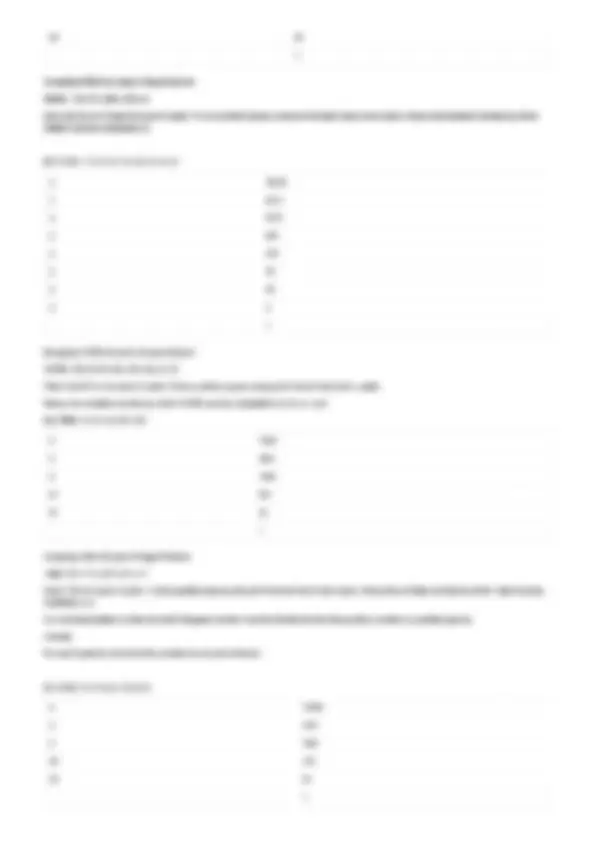
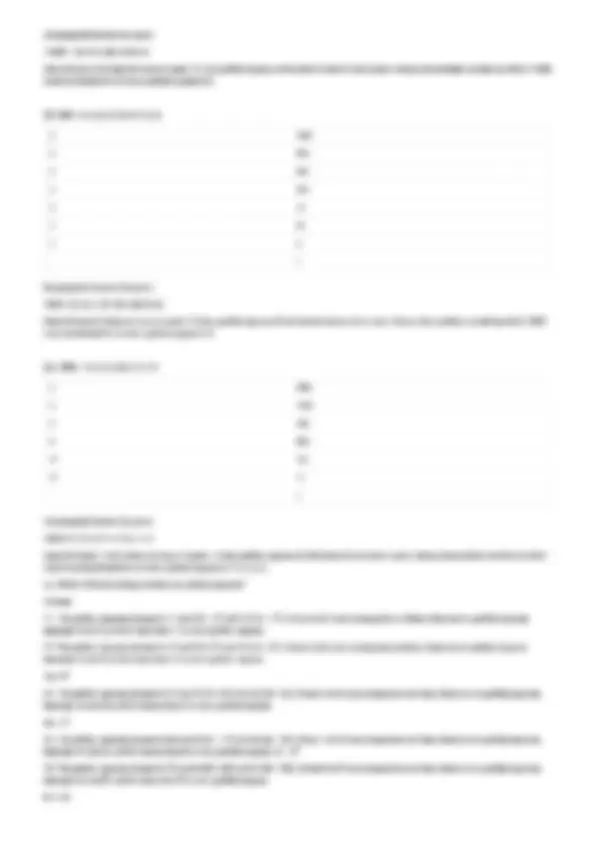
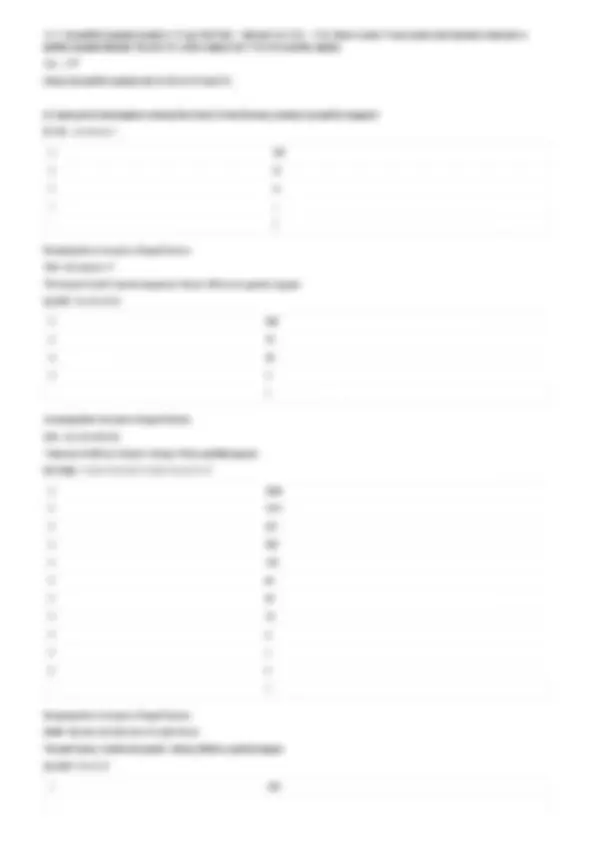
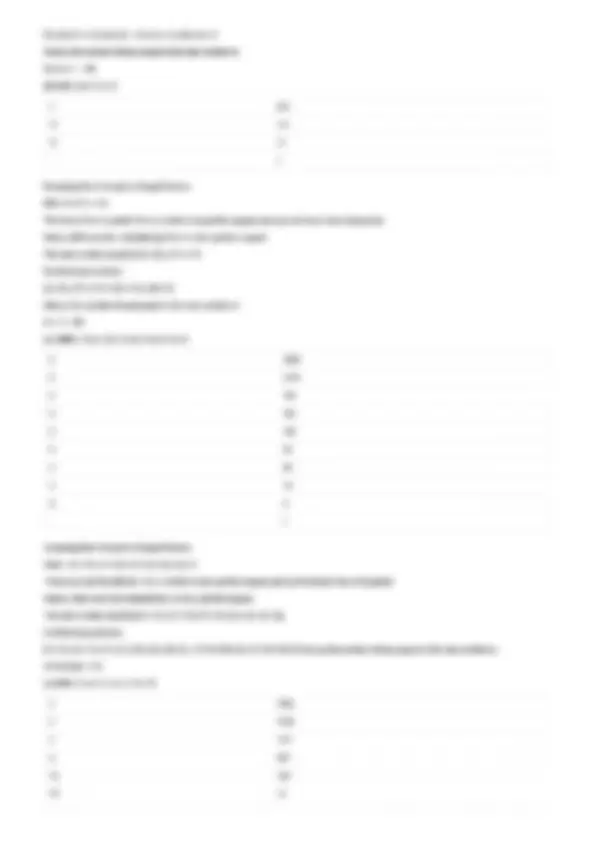
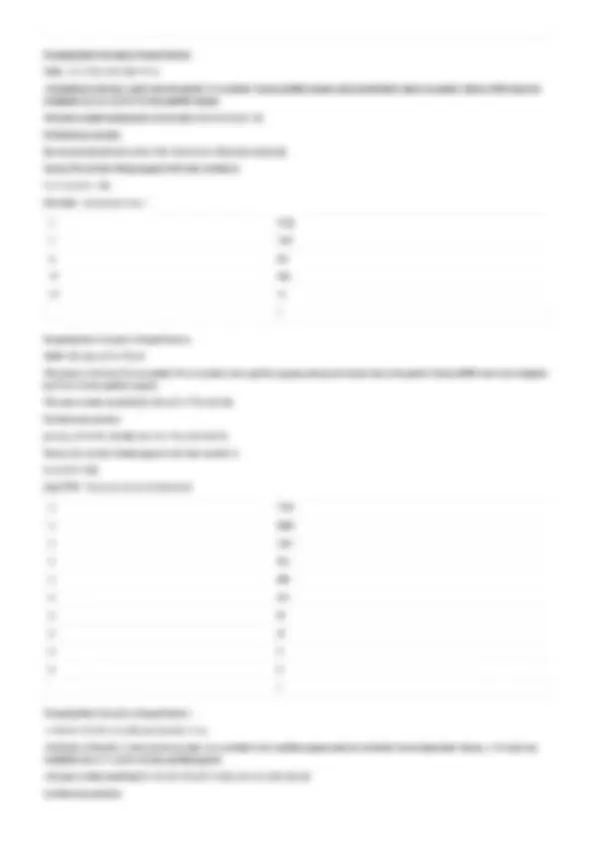
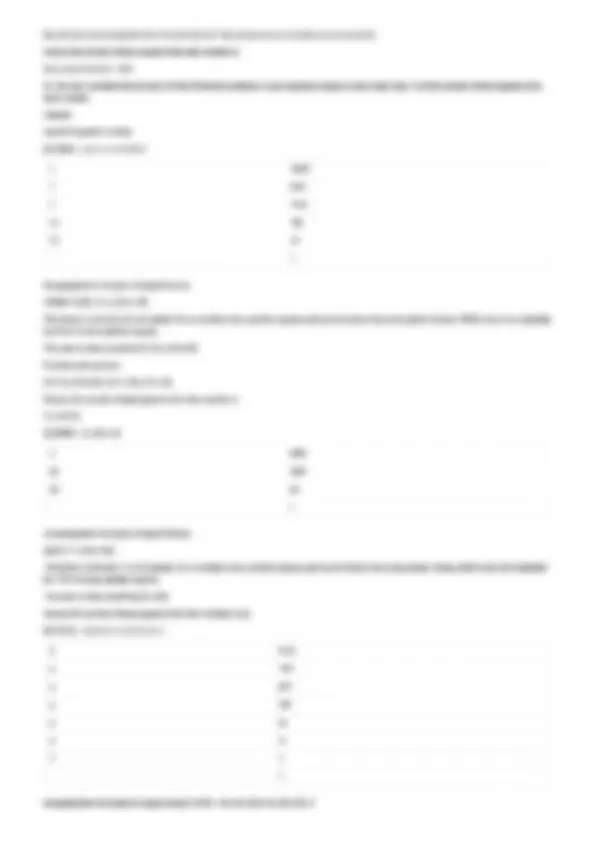
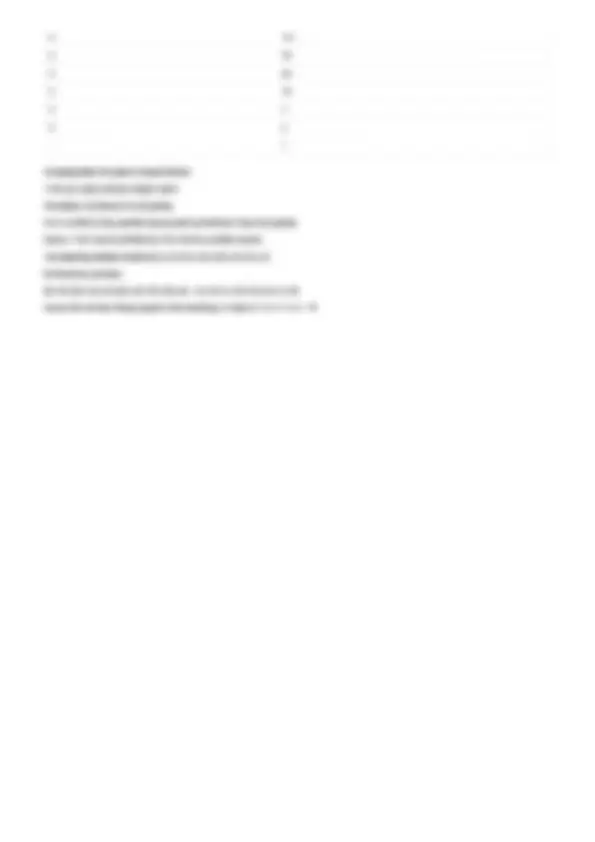
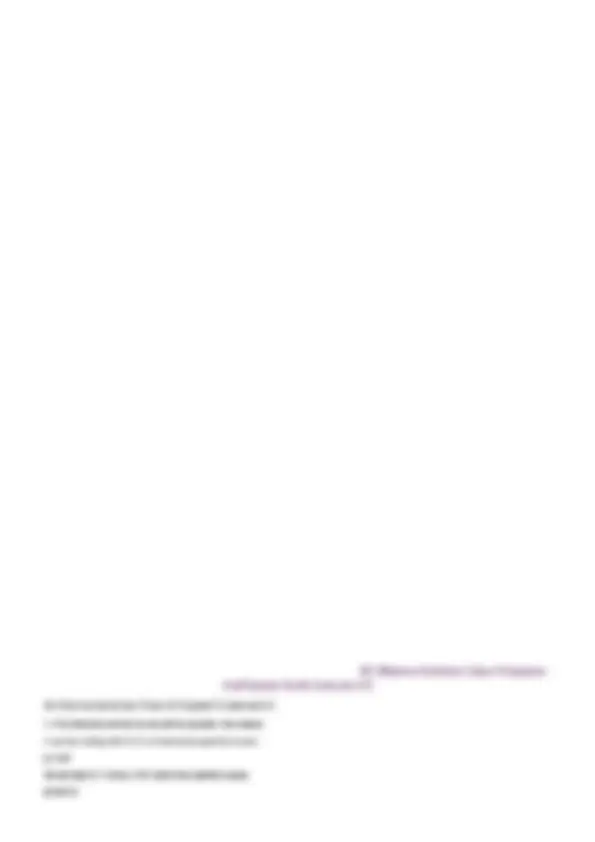
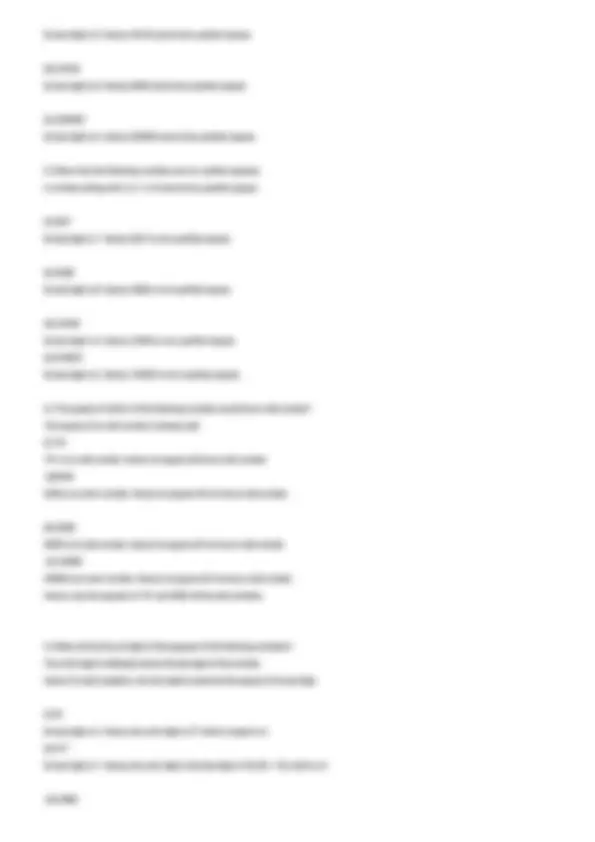
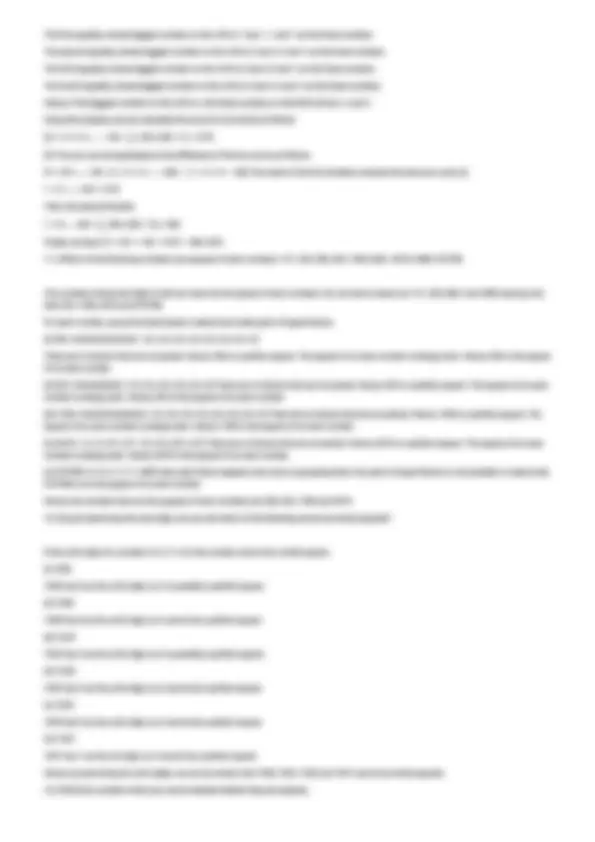
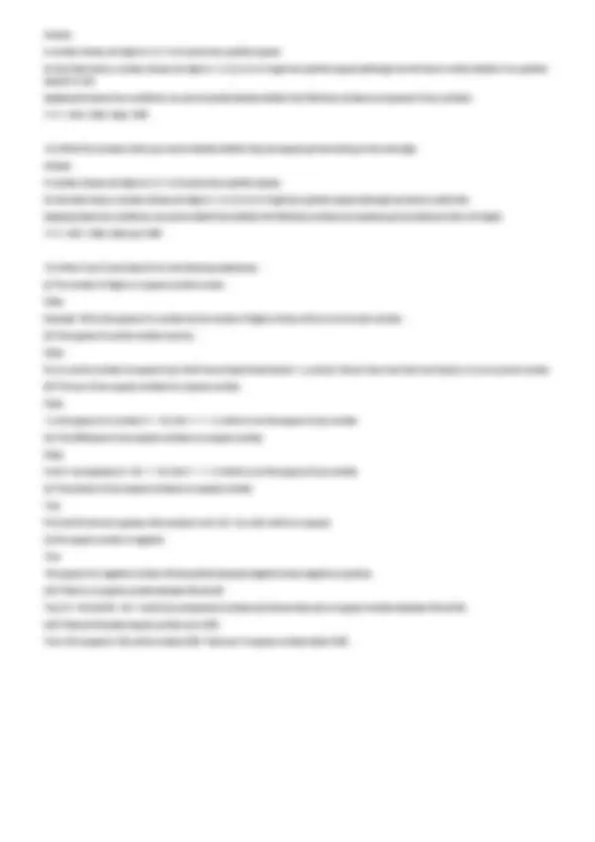
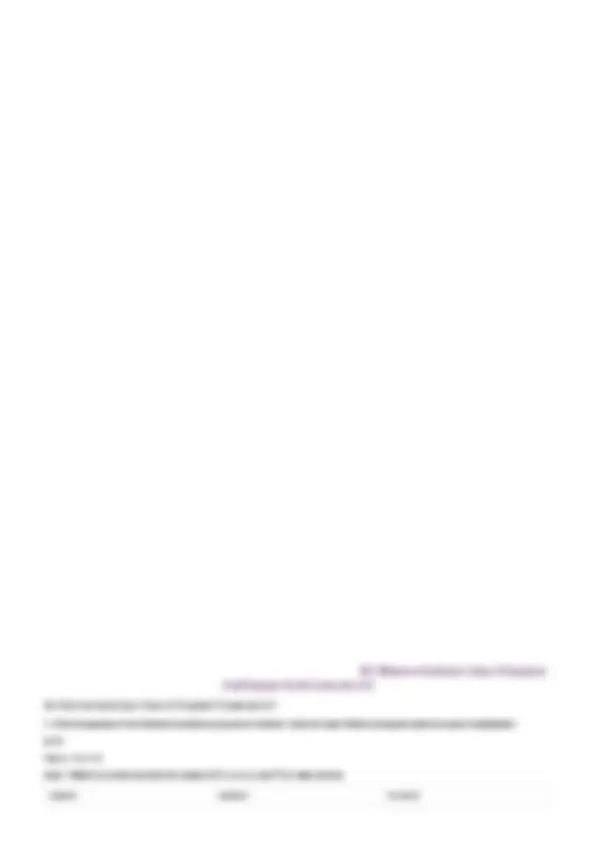
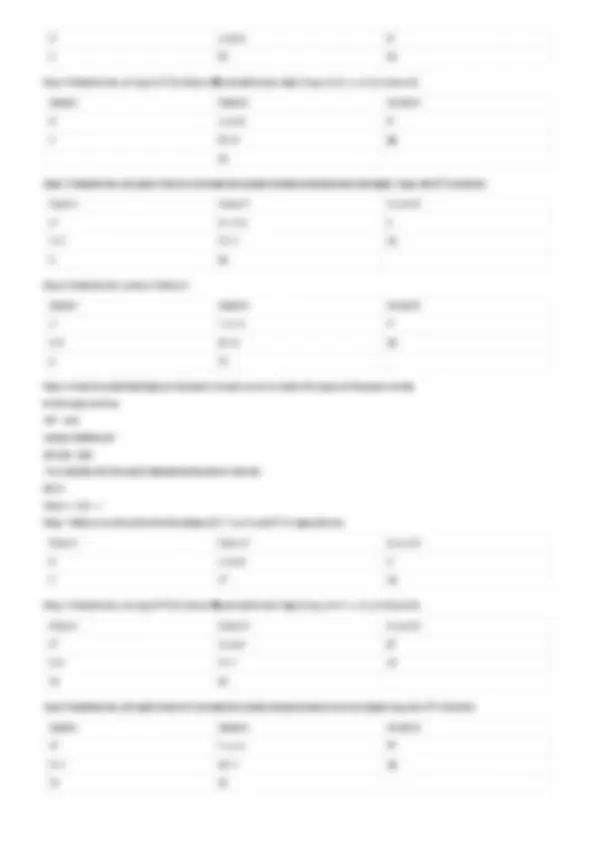
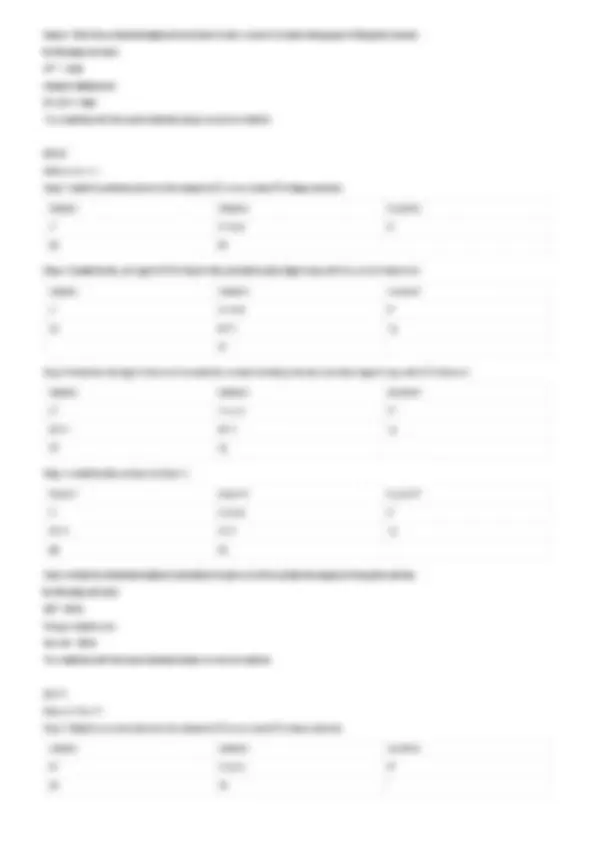
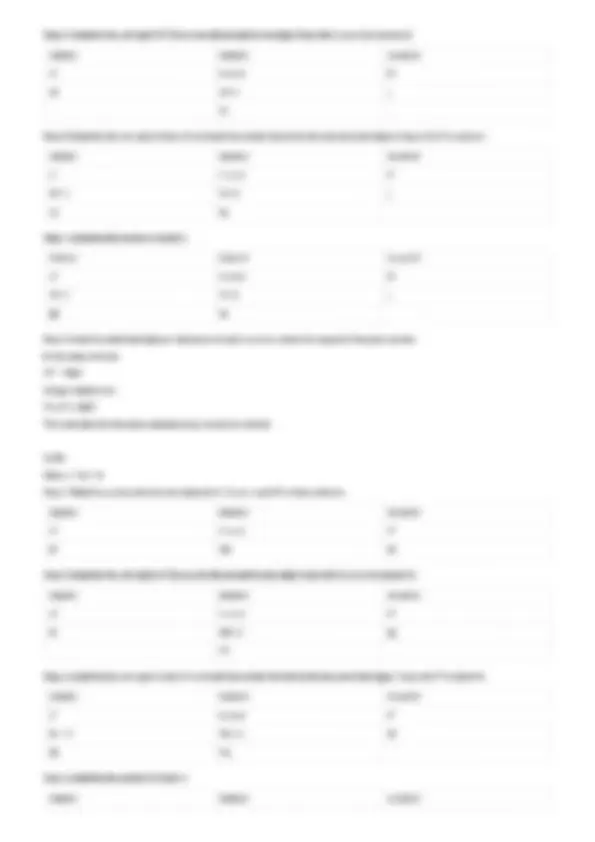
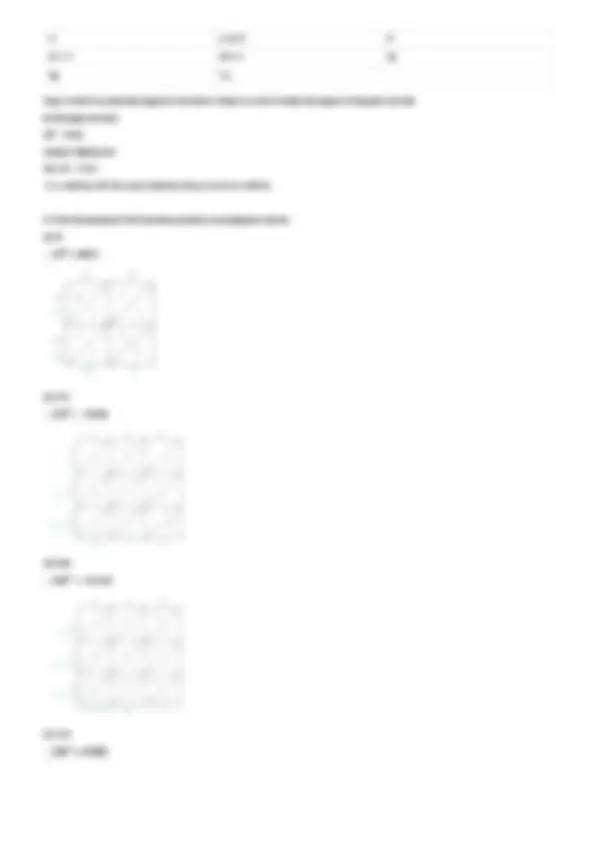
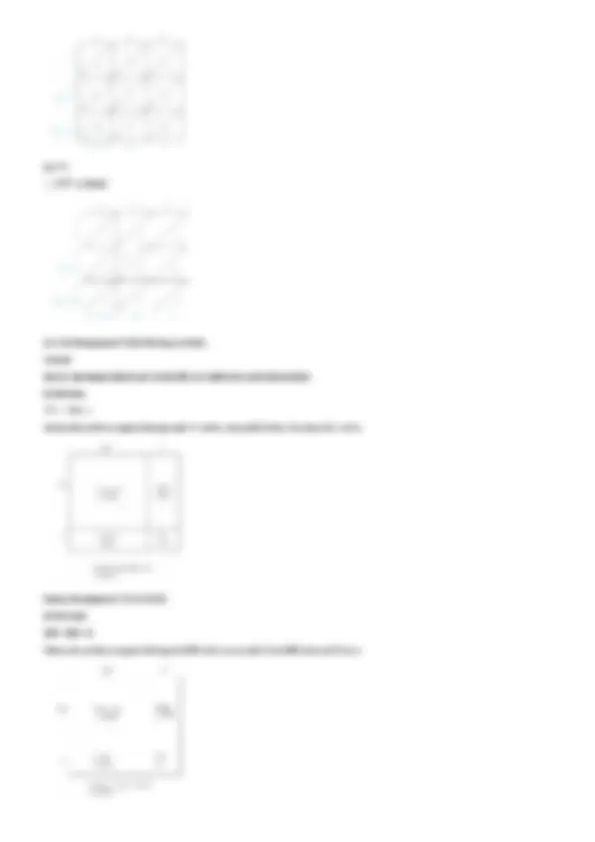
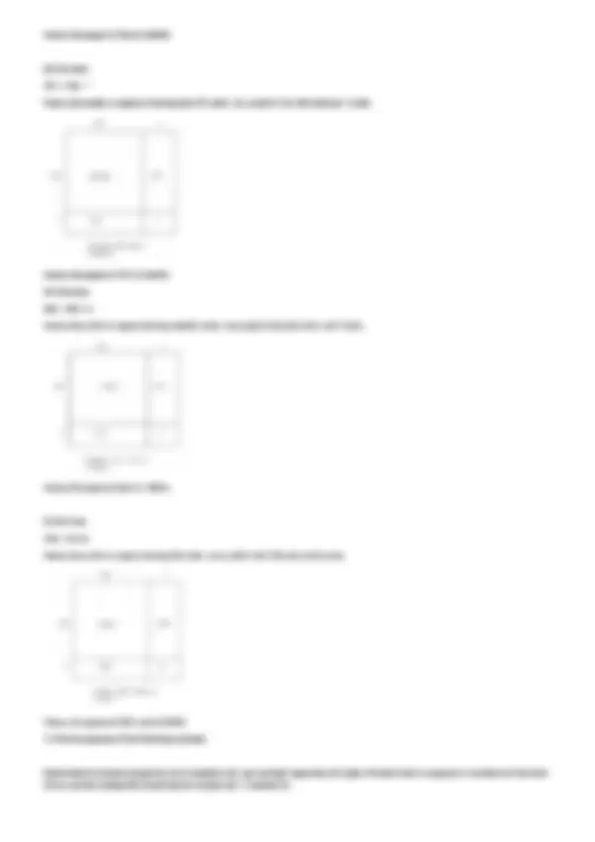
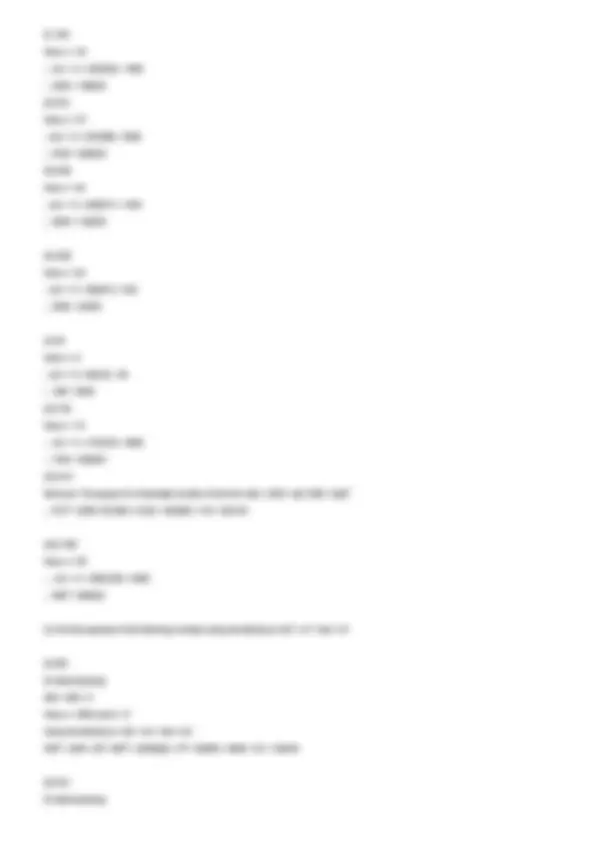
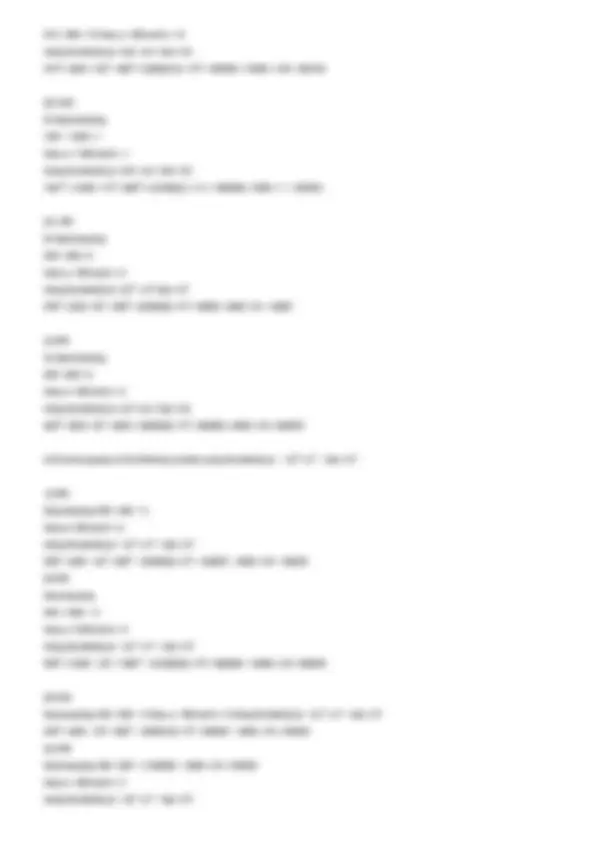
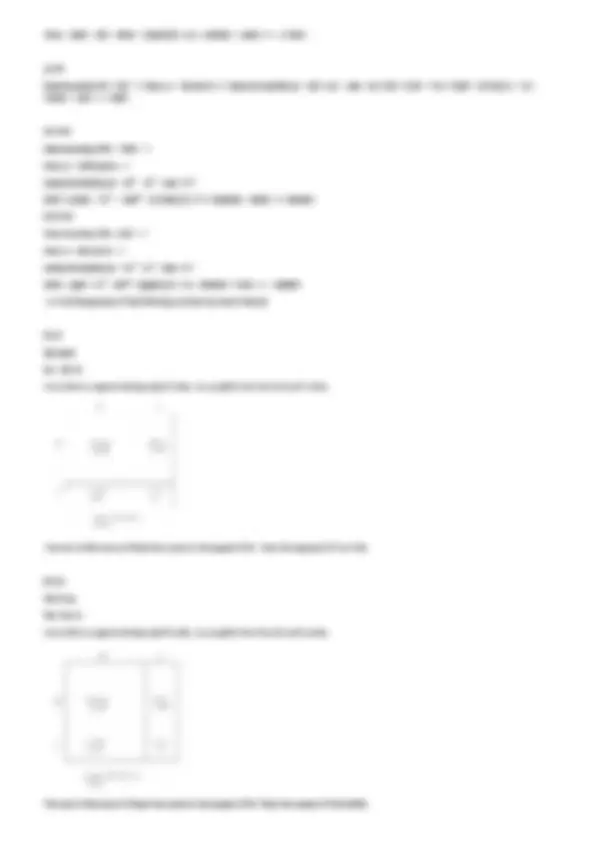
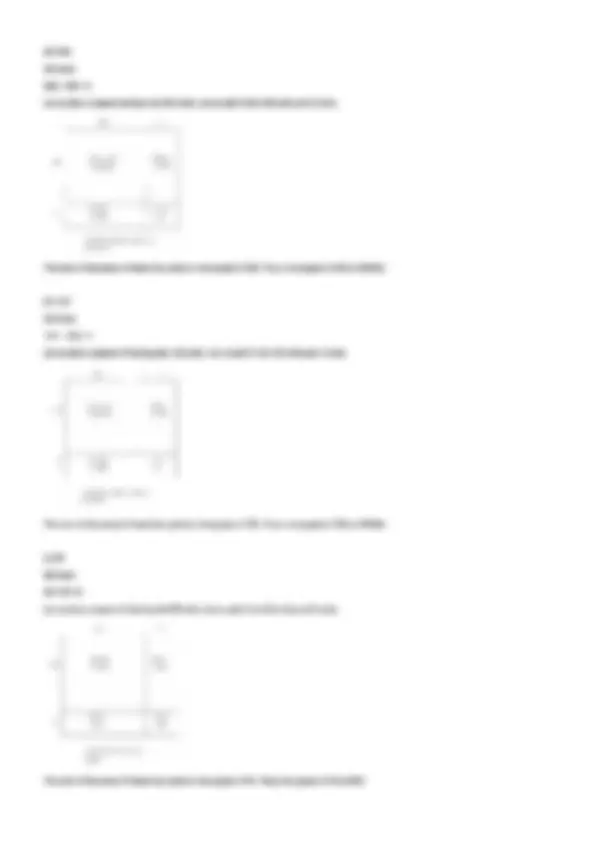
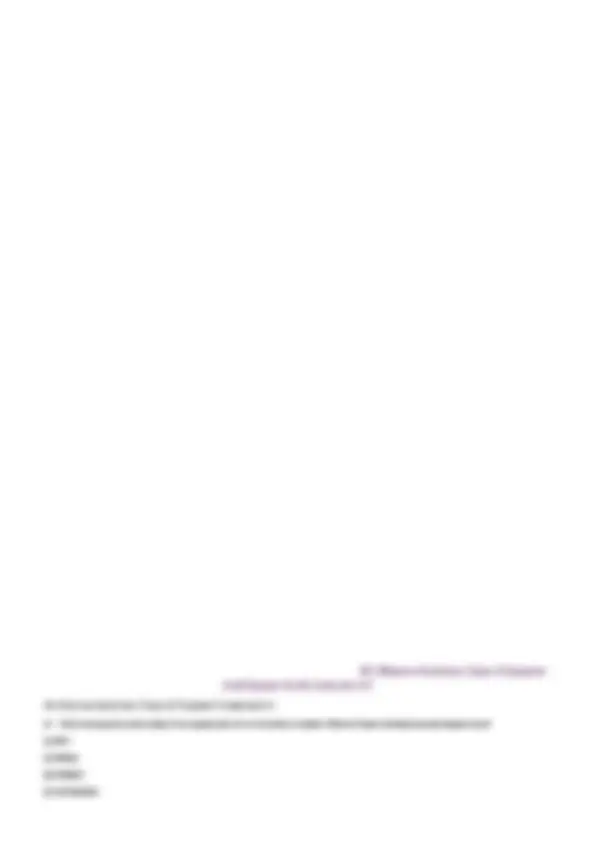
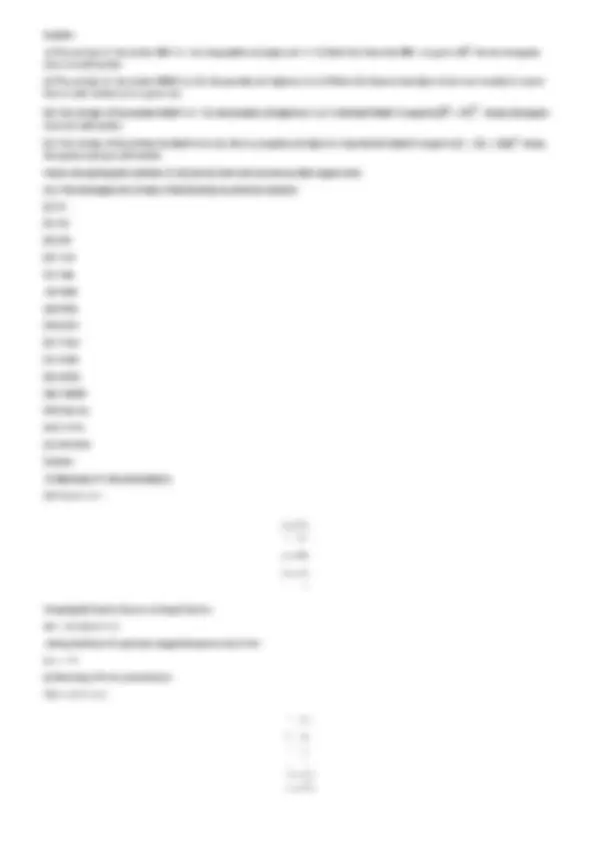
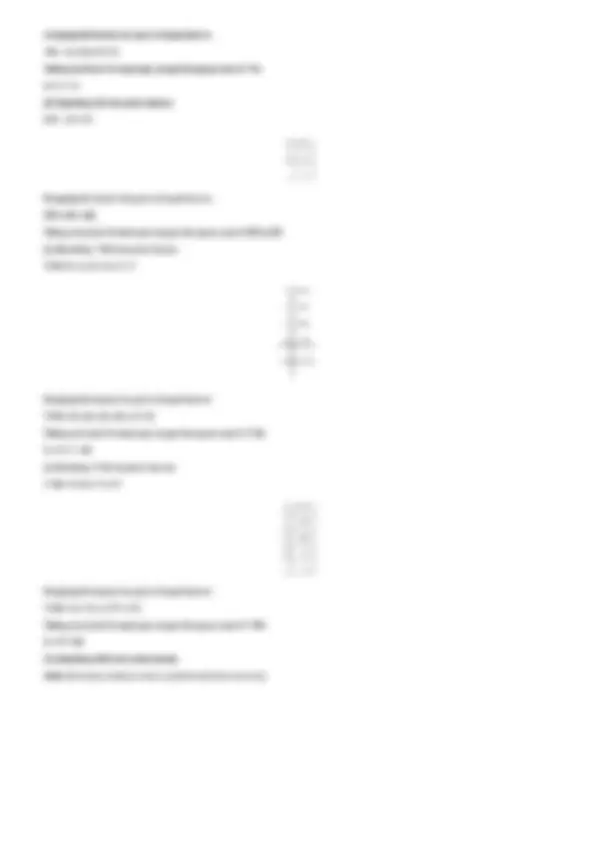
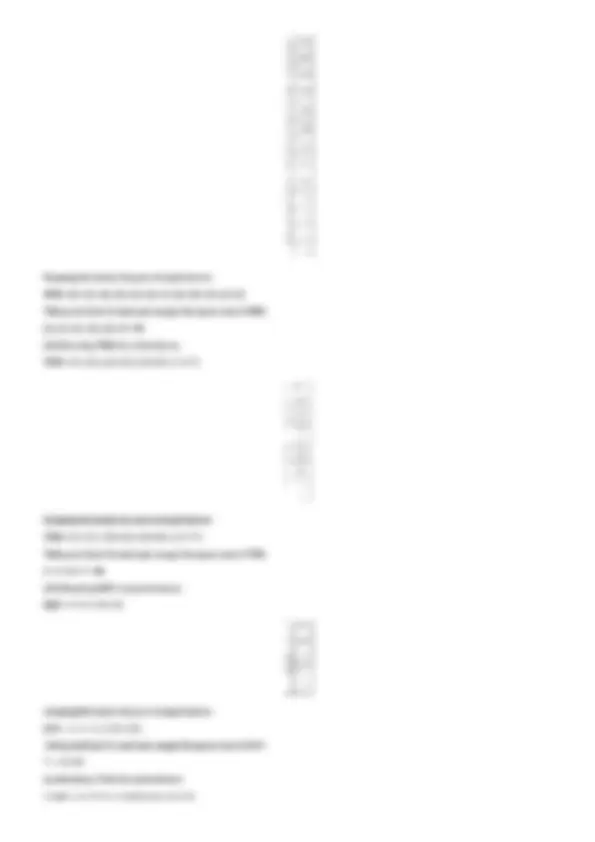
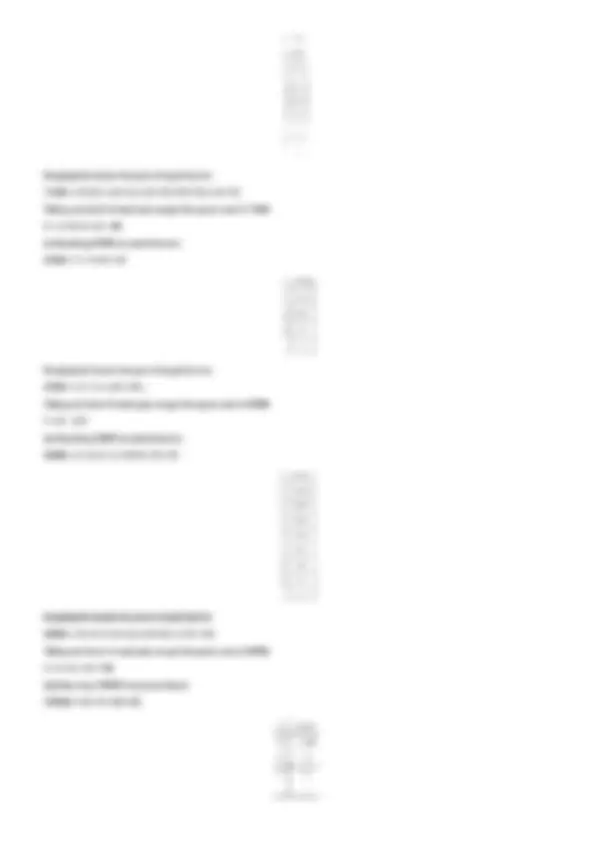
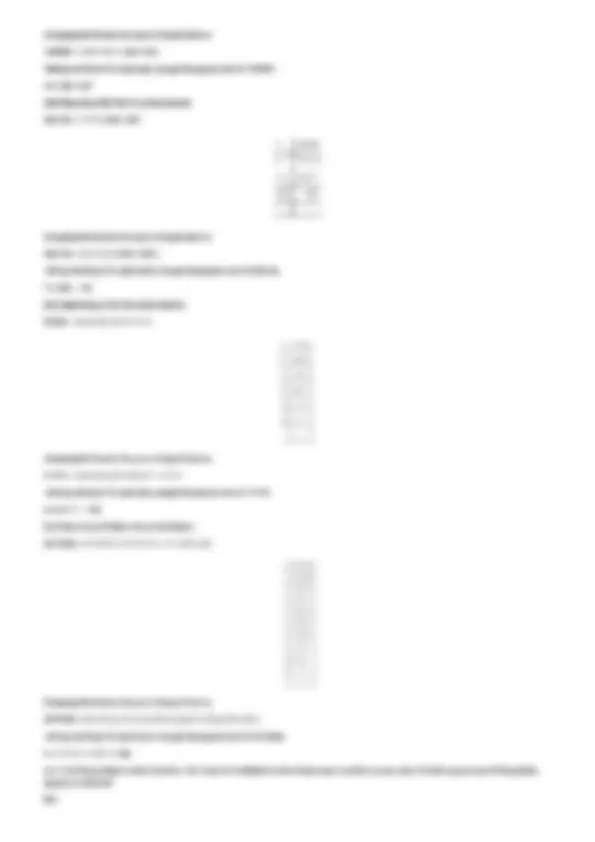
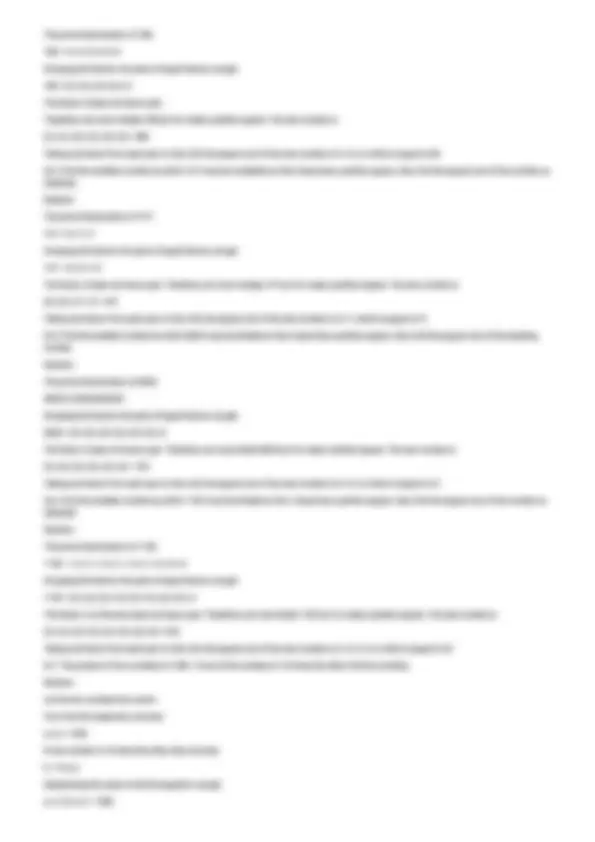
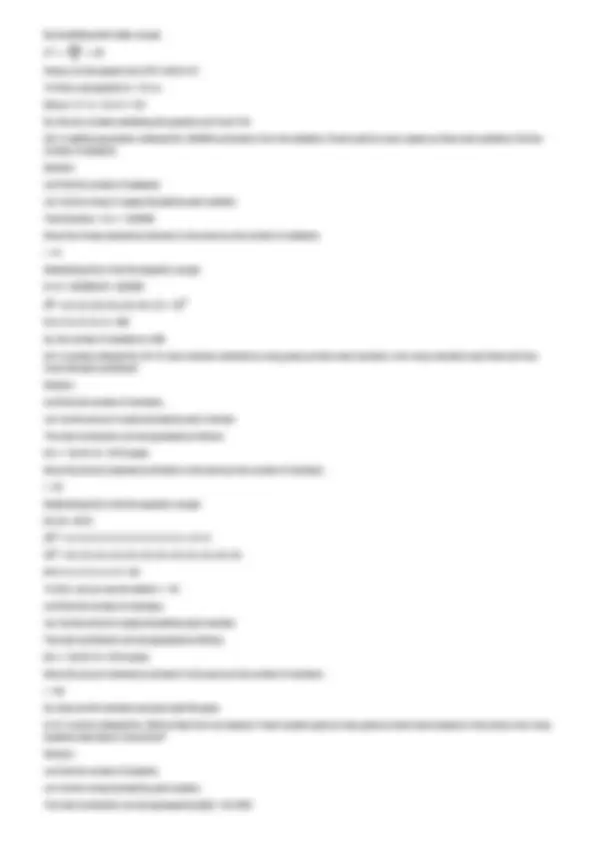
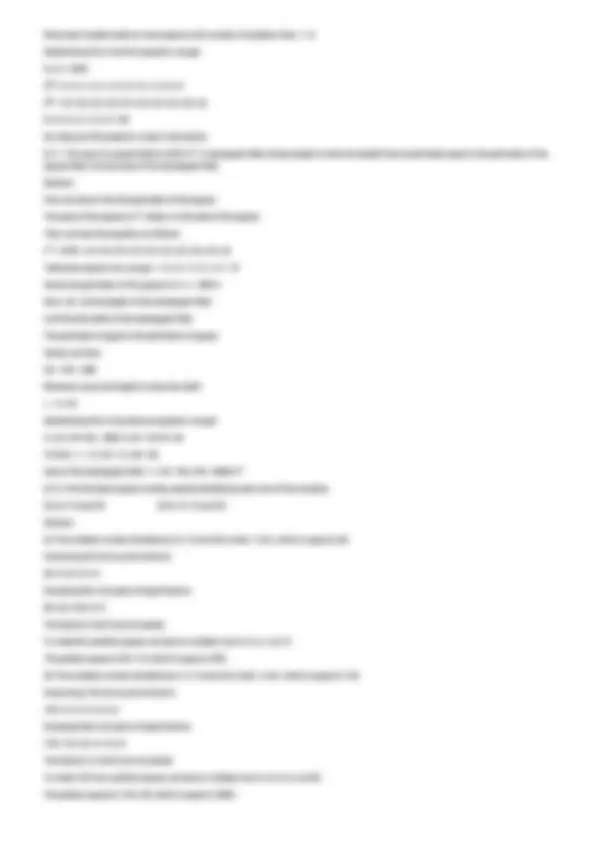
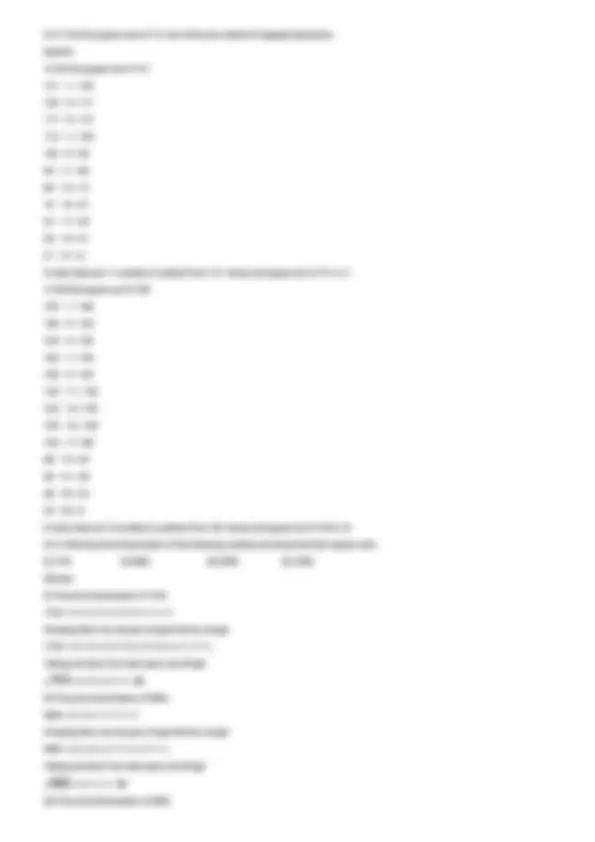
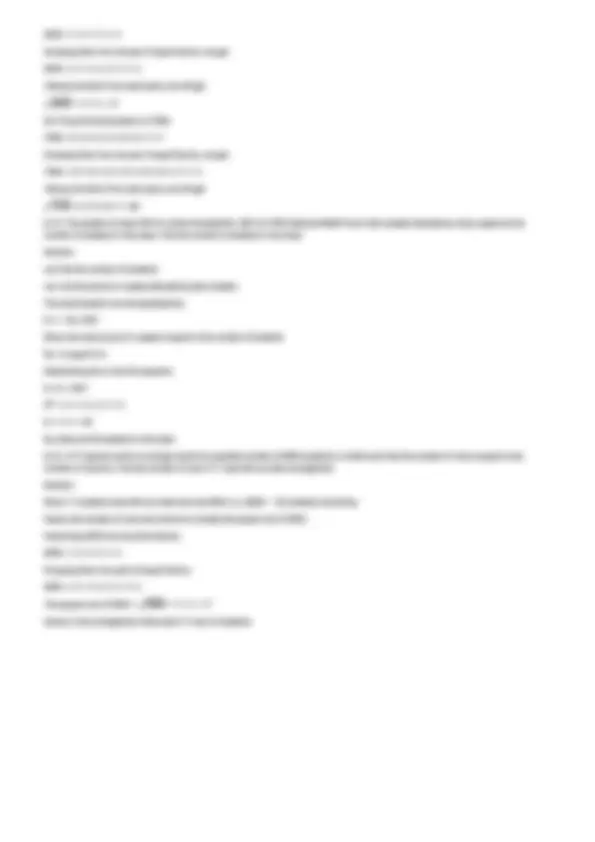
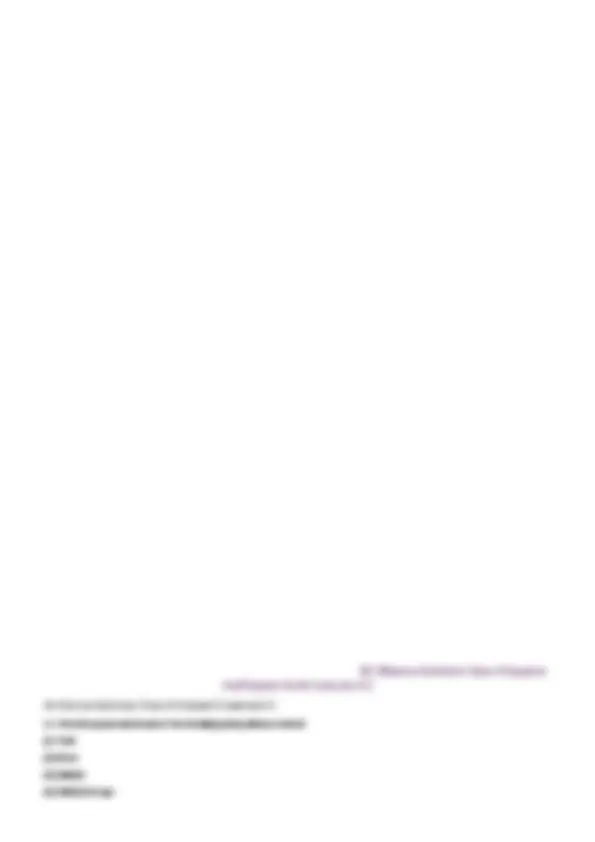
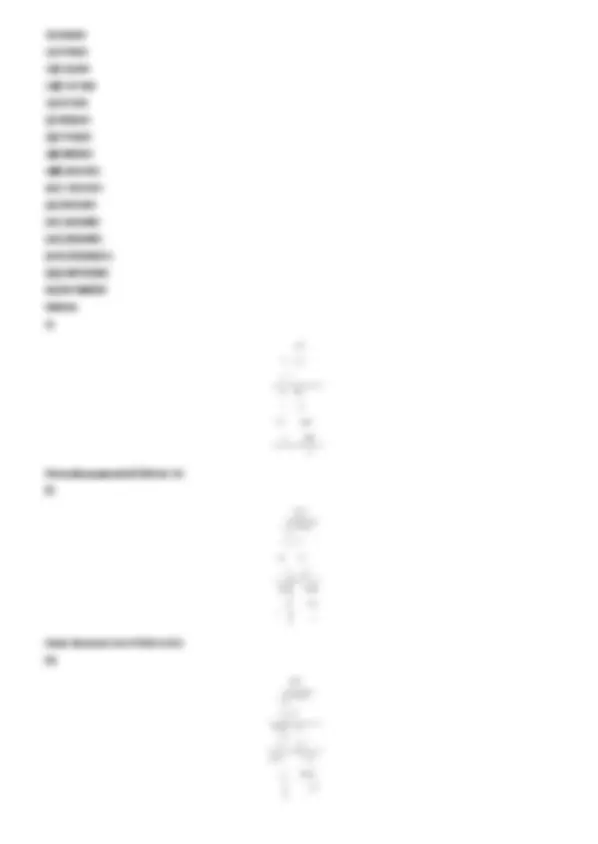
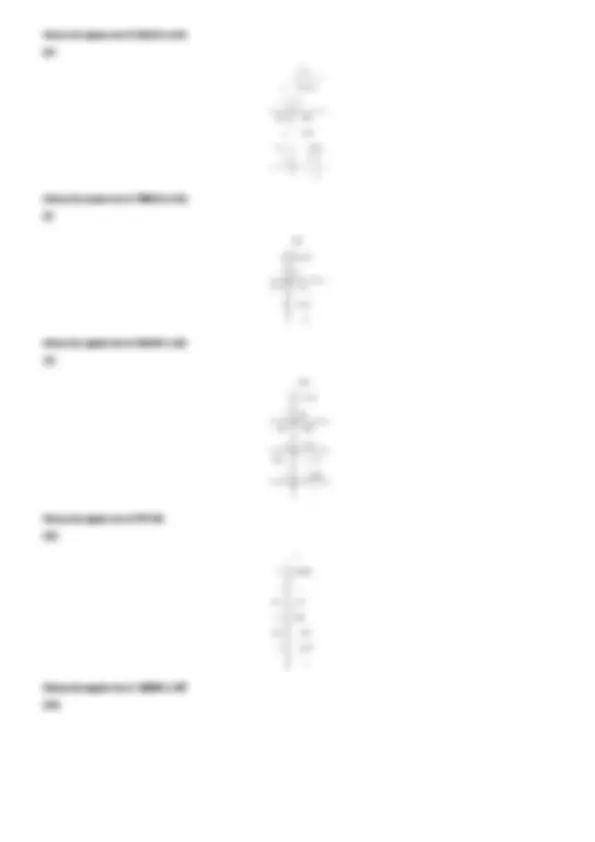
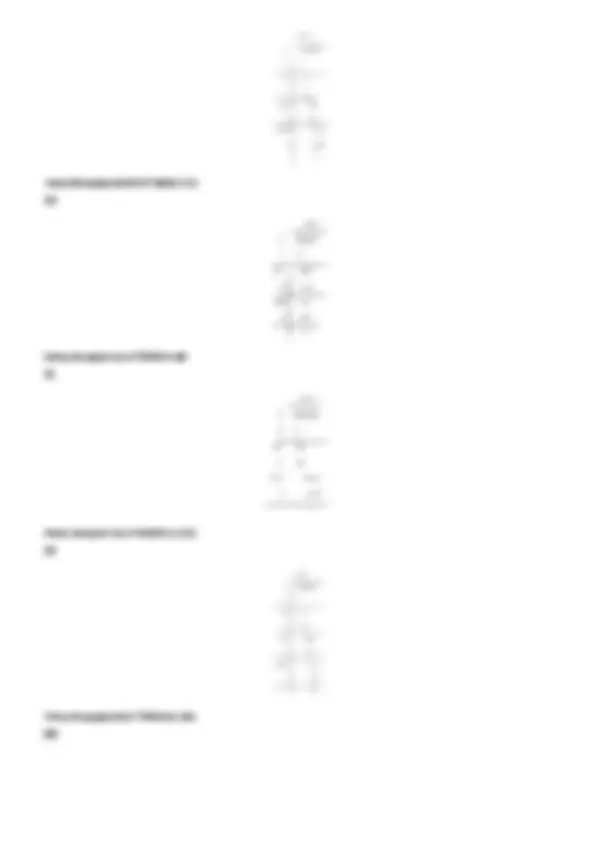
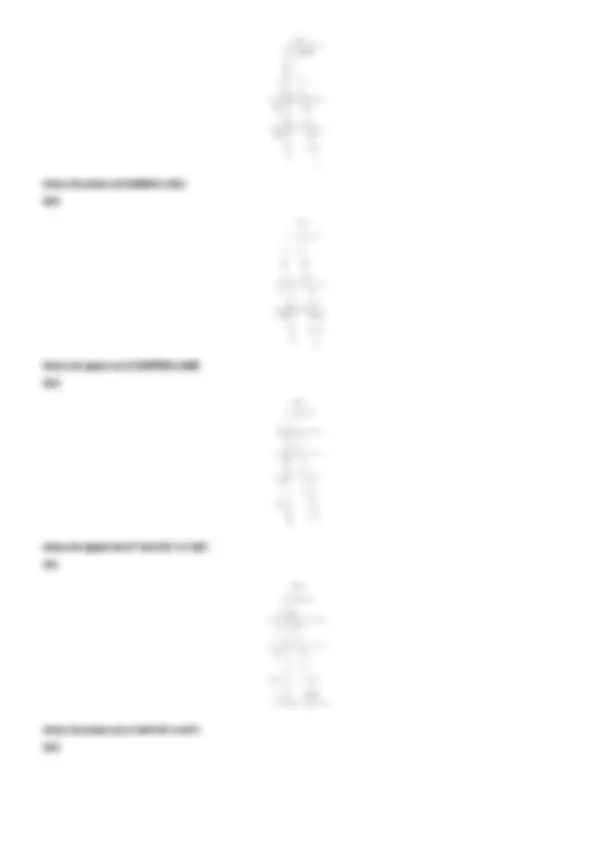

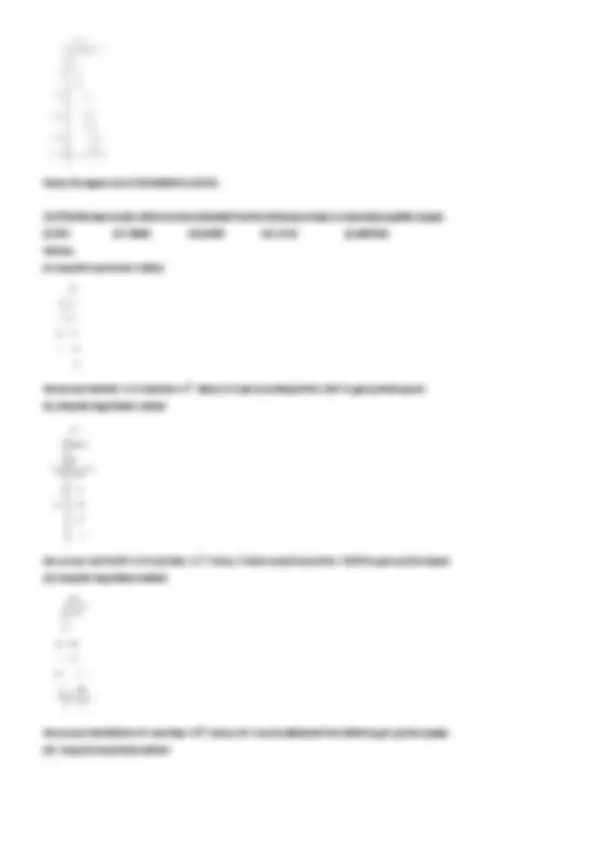
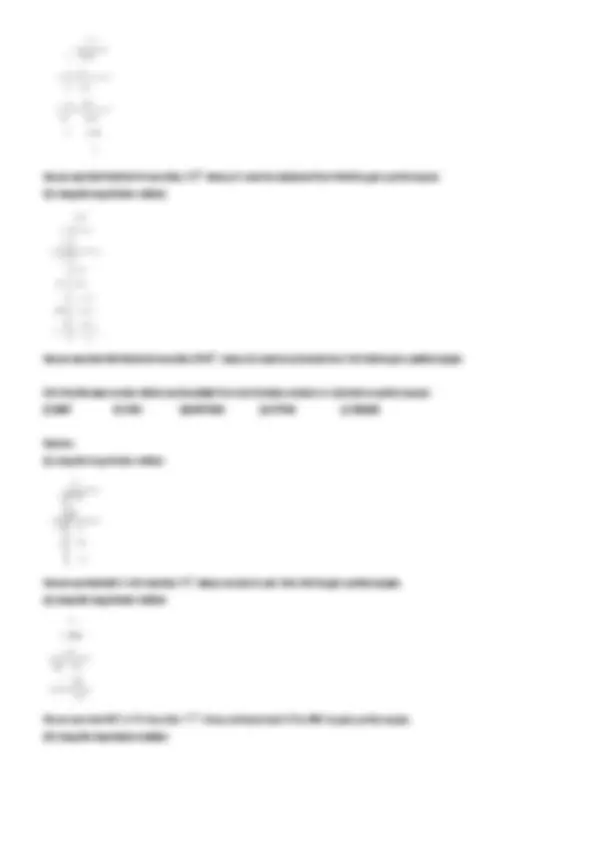
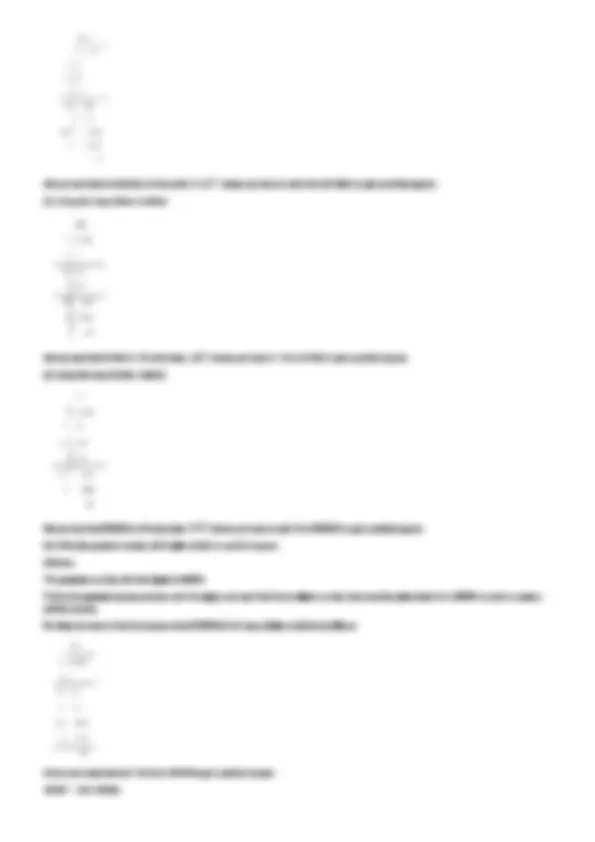
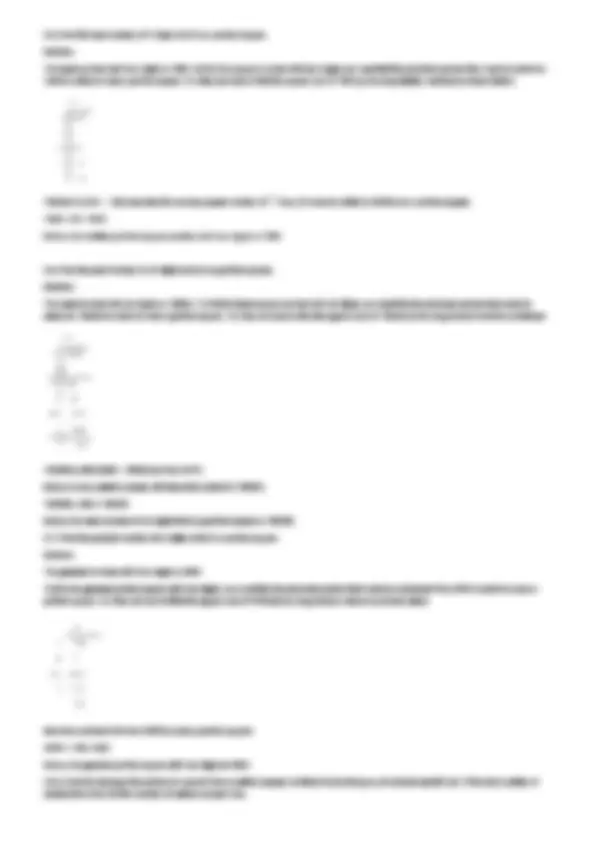
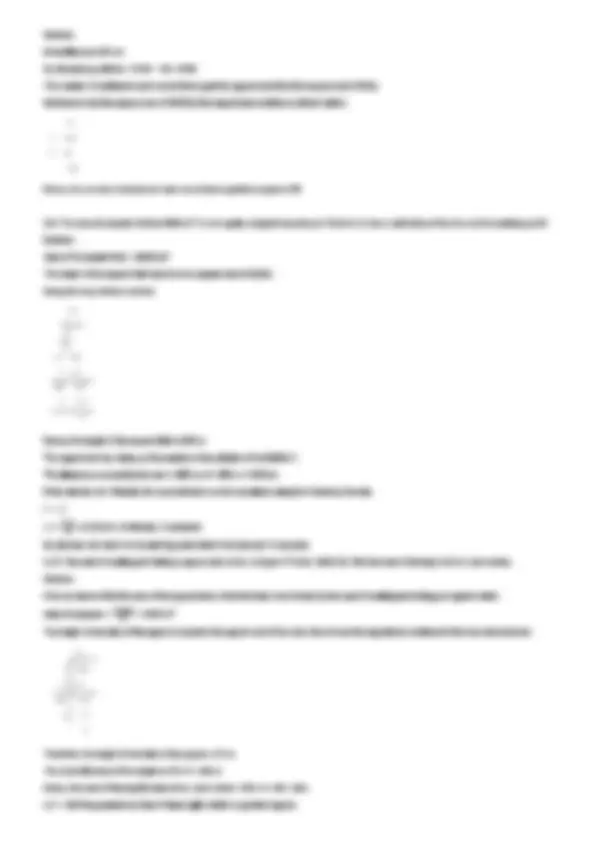
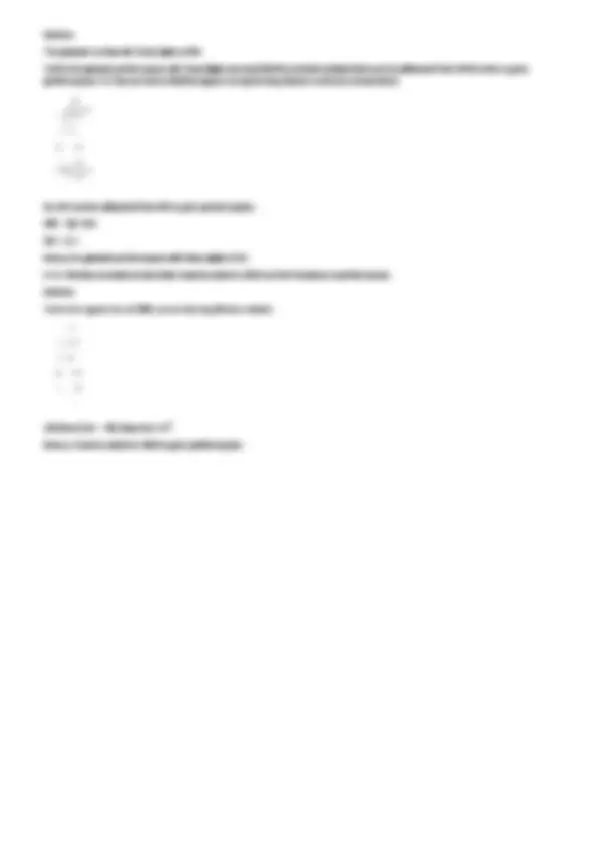
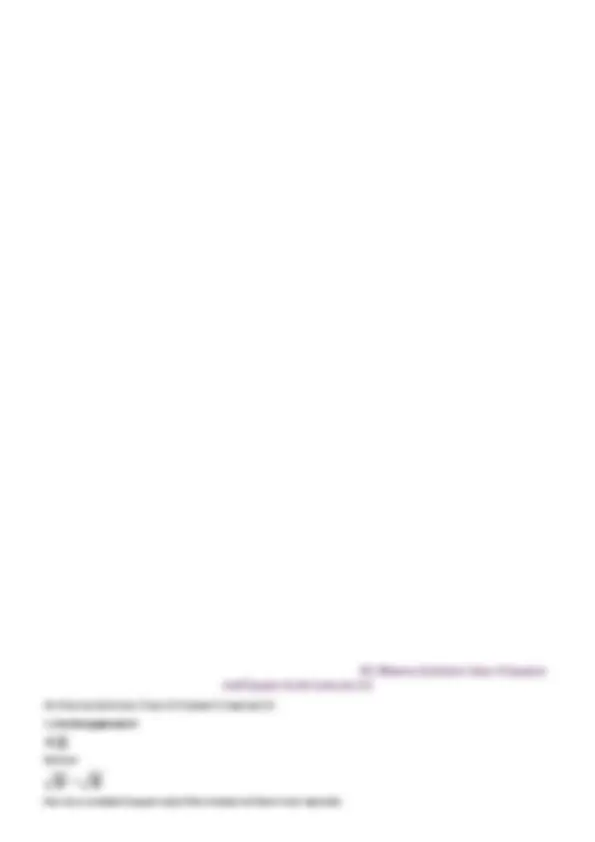
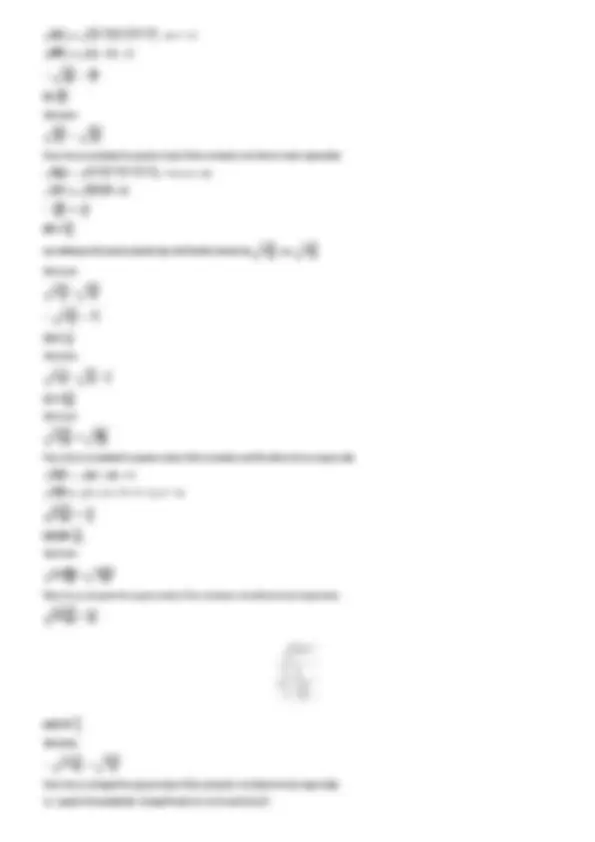
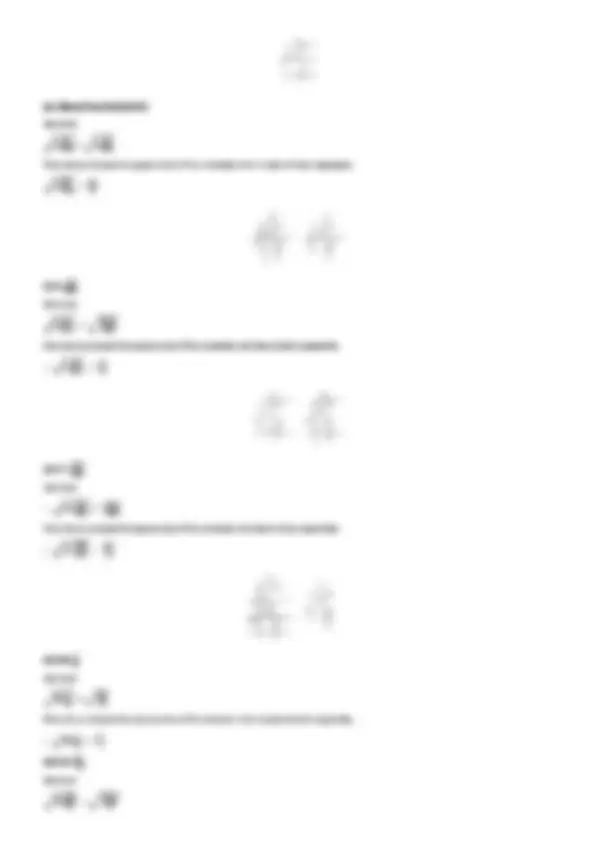
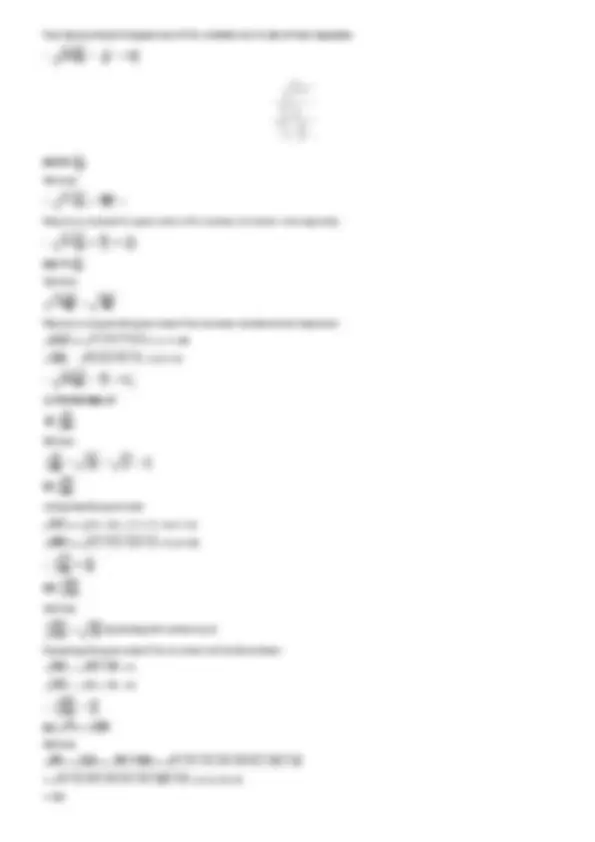
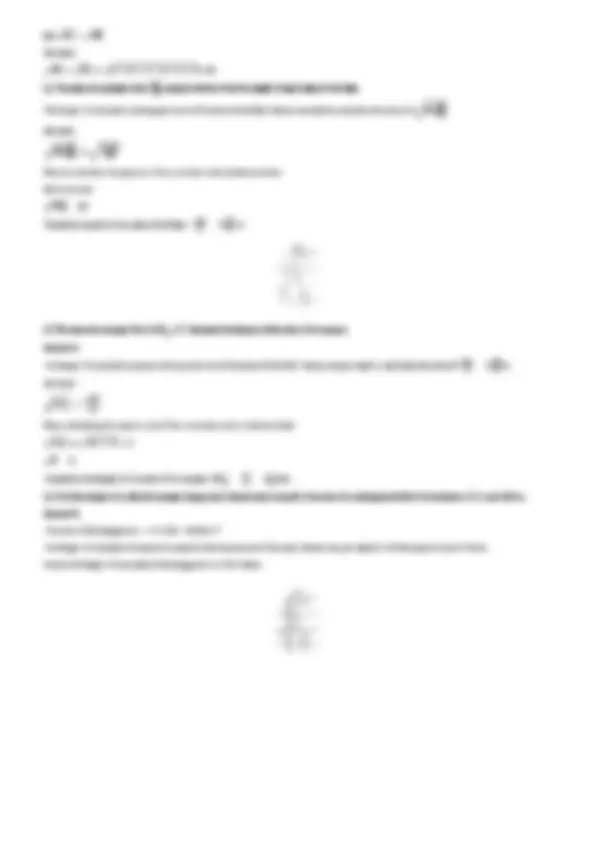
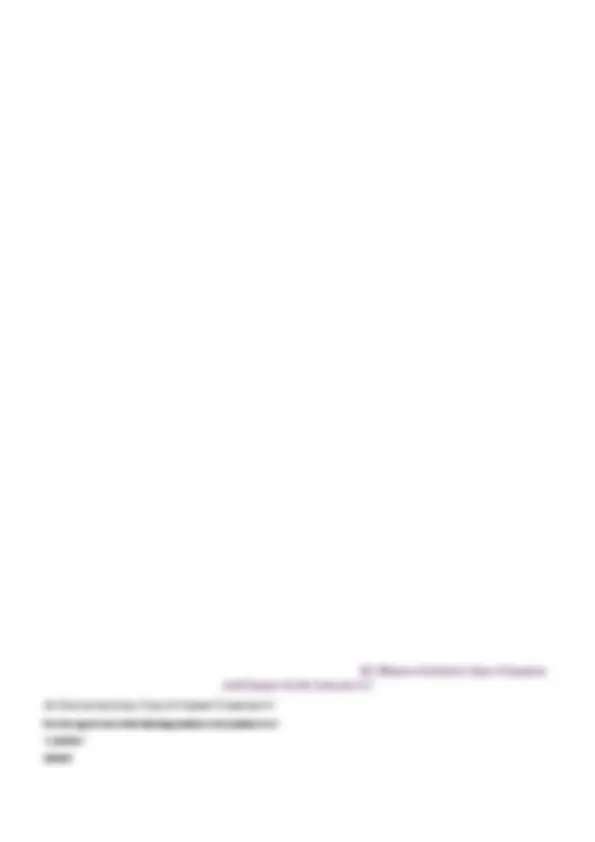
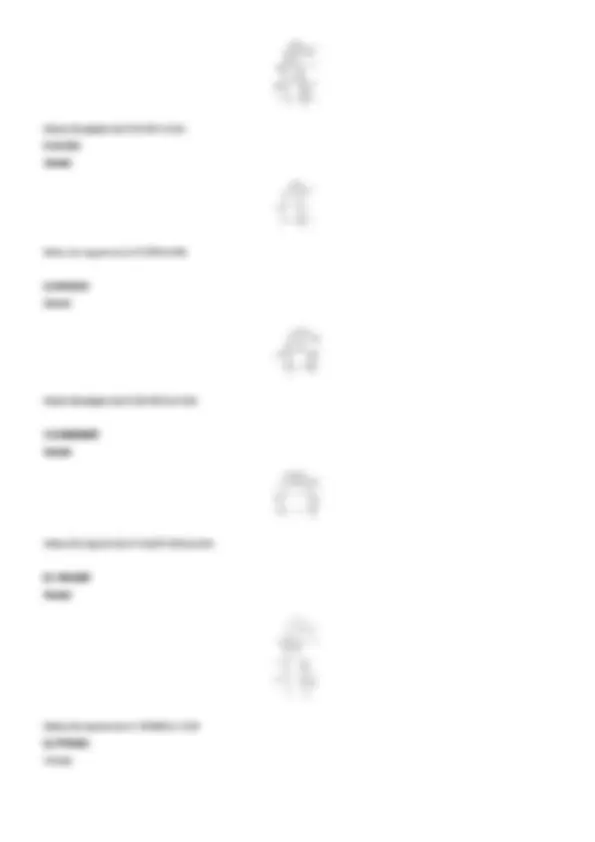
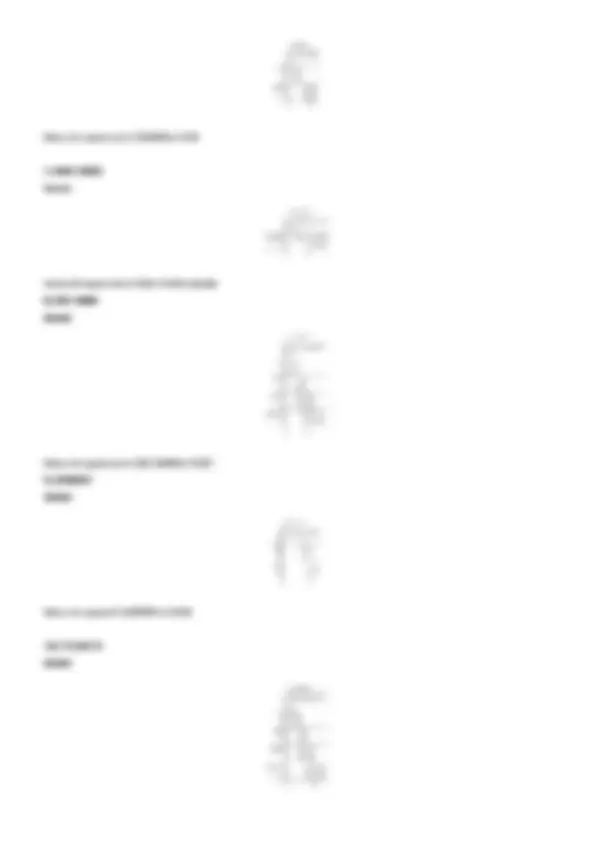
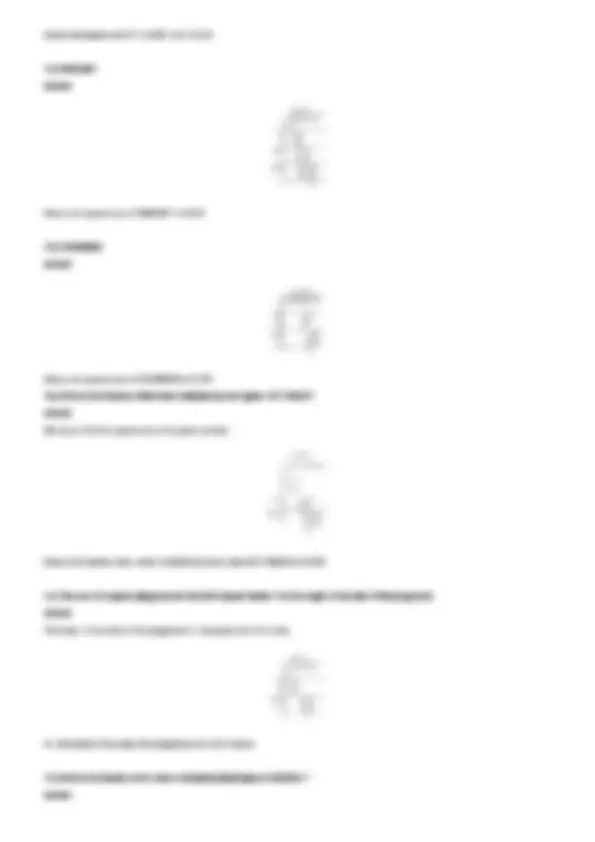
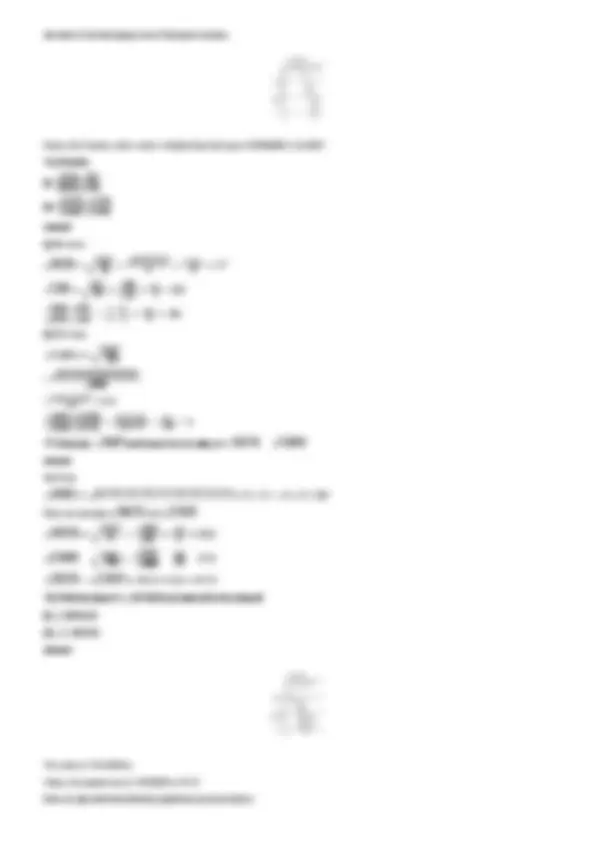
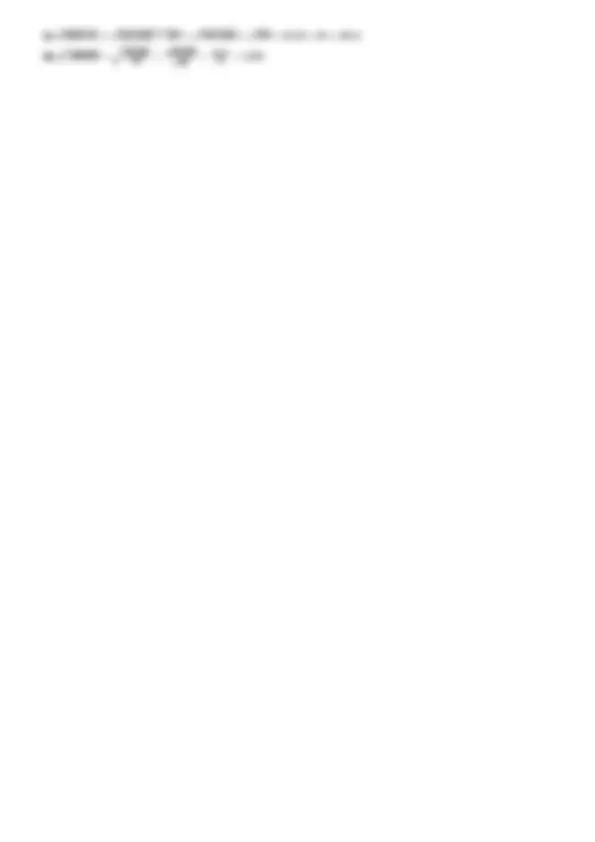
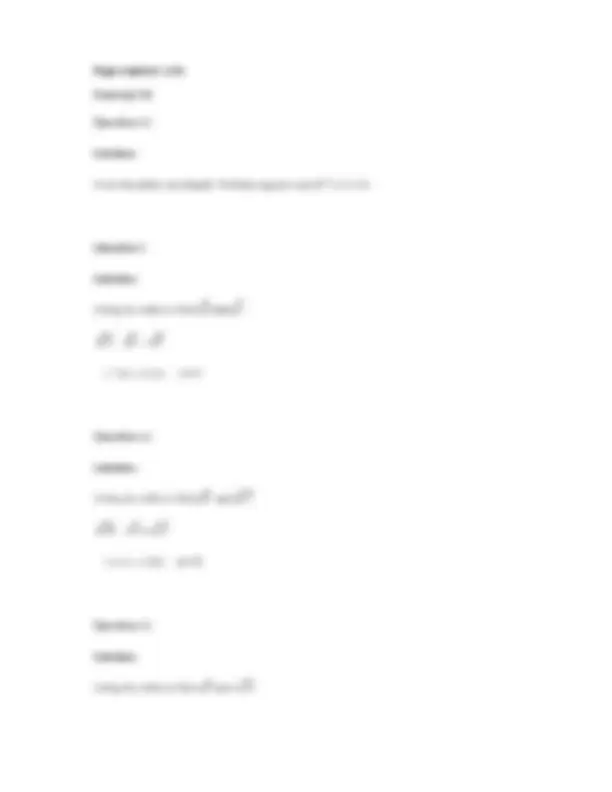

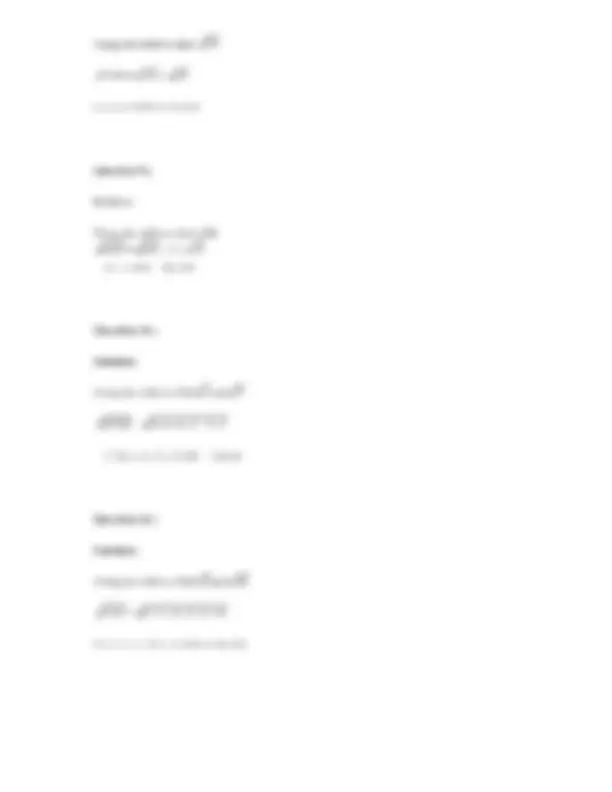
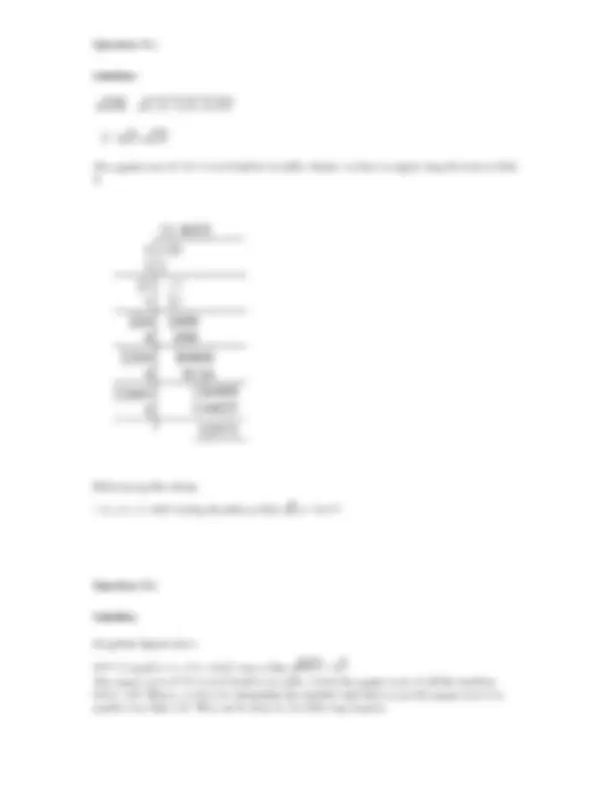
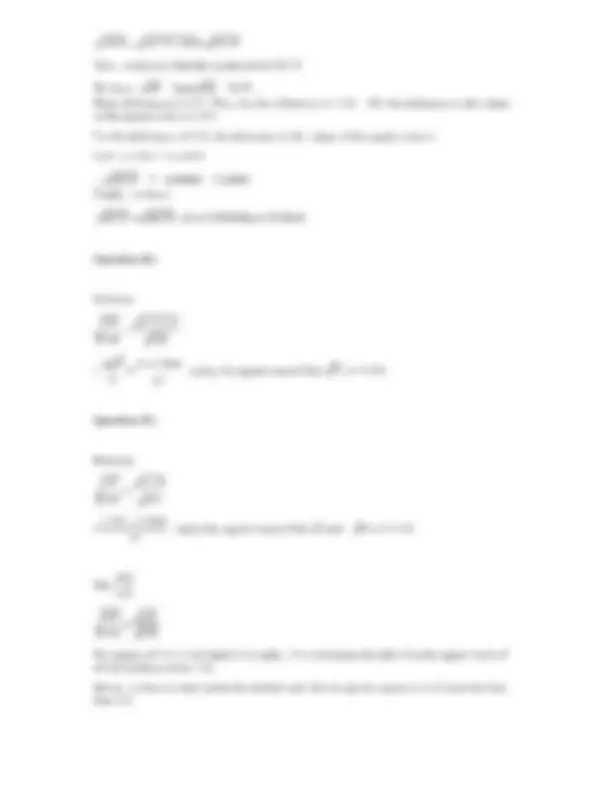
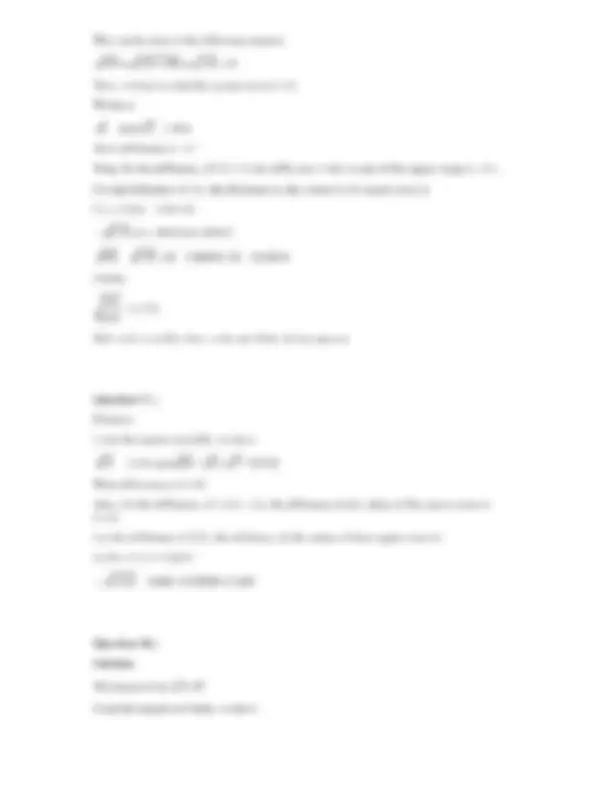
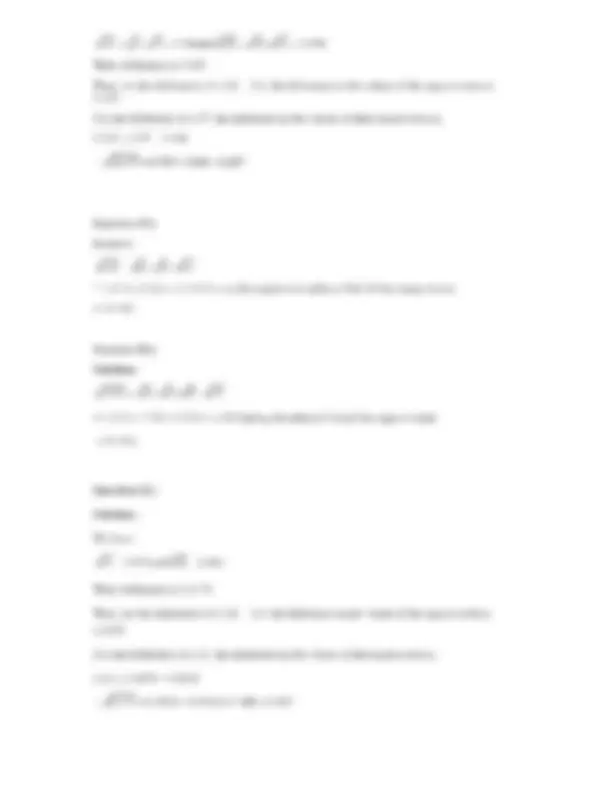
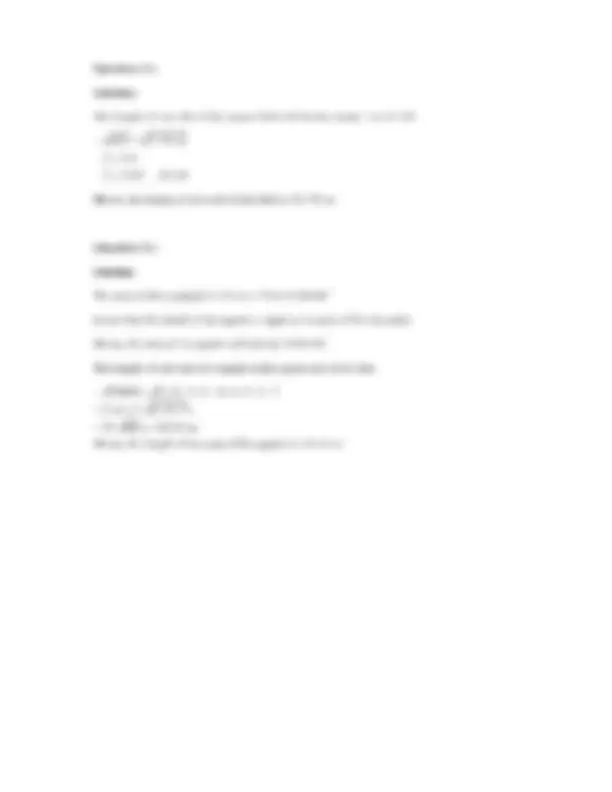
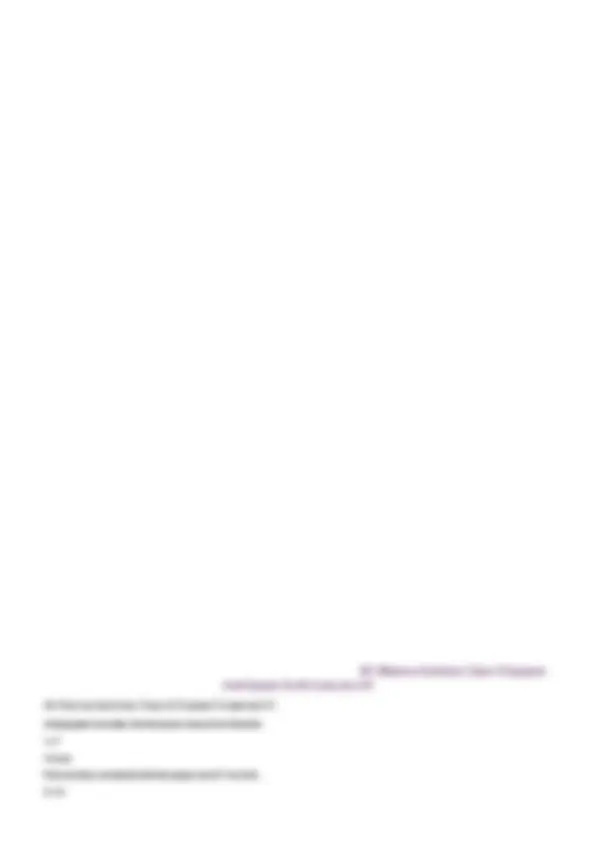
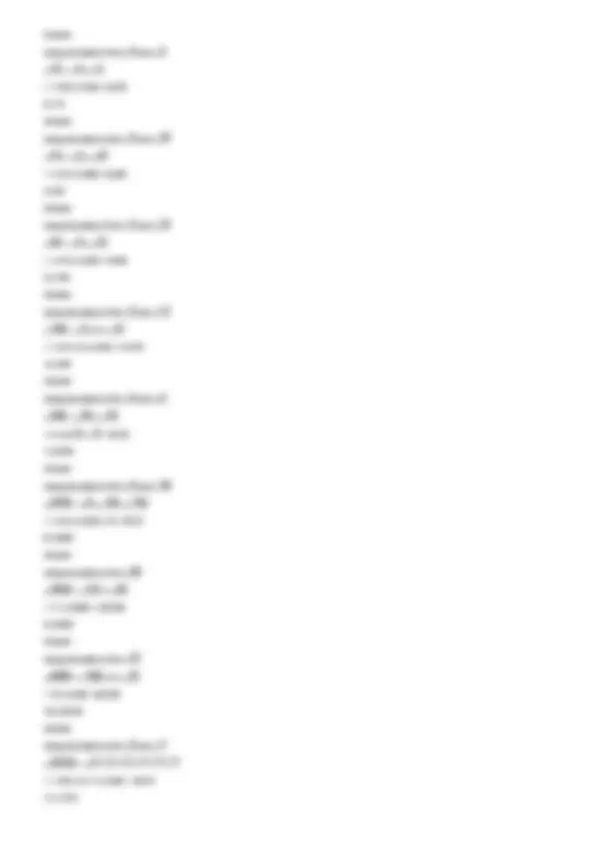
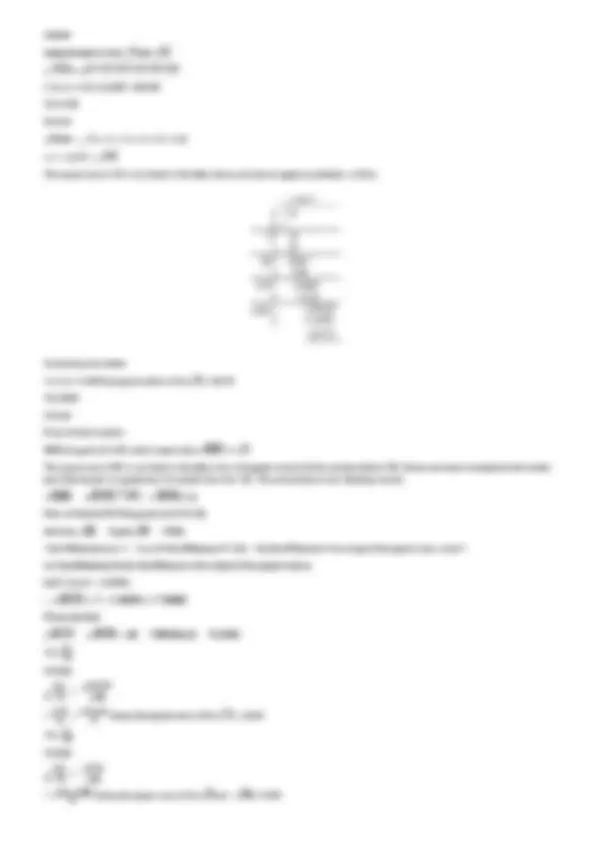
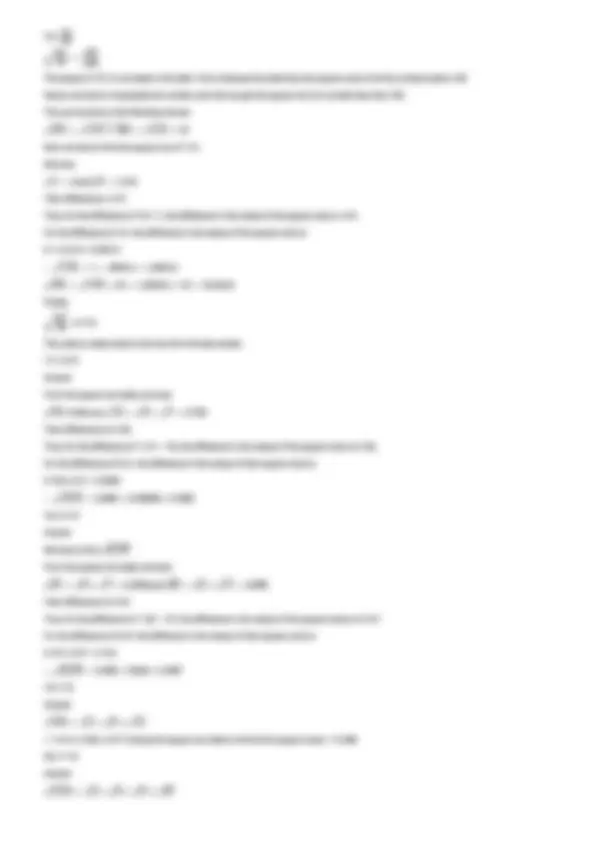
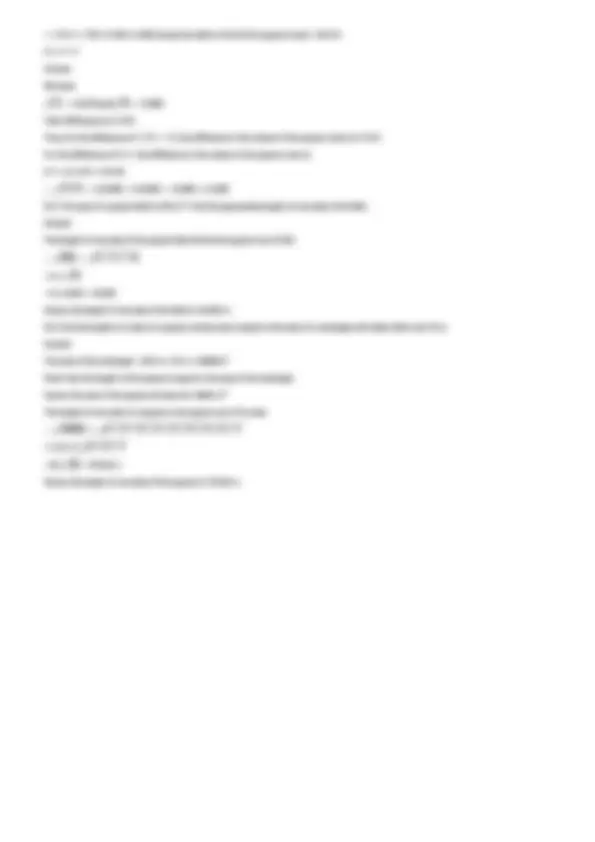


Study with the several resources on Docsity

Earn points by helping other students or get them with a premium plan


Prepare for your exams
Study with the several resources on Docsity

Earn points to download
Earn points by helping other students or get them with a premium plan
Community
Ask the community for help and clear up your study doubts
Discover the best universities in your country according to Docsity users
Free resources
Download our free guides on studying techniques, anxiety management strategies, and thesis advice from Docsity tutors
Hence, 1156 is the square of 34, which is equal to 2 x 17. ... Taking one factor for each pair, we get the square root of 1156: 2x17 = 34.
Typology: Study notes
1 / 77

This page cannot be seen from the preview
Don't miss anything!






































































1.) Which of the following numbers are perfect squares? (i) 484 484 = 222 (ii) 625 625 = 252
(iii) 576 576 = 242 (iv) 941 Perfect squares closest to 941 are 900 (302) and 961 (312). Since 30 and 31 are consecutive numbers, there are no perfect squares between 900 and 961. Hence, 941 is not a perfect square. (v) 961 961 = 3 1 2 (vi) 2500 2500 = 502 Hence, all numbers except that in (iv), i.e. 941, are perfect squares.
Grouping the factors into pairs of equal factors, we obtain: 1156 = (2 x 2) x (17 x 17) No factors are left over. Hence, 1156 is a perfect square. Moreover, by grouping 1156 into equal factors:
Hence, 1156 is the square of 34, which is equal to 2 x 17. (ii) 2025 =3x3x3x3x5x Grouping the factors into pairs of equal factors, we obtain: 2025 = (3 x 3) x (3 x 3) x (5 x 5) No factors are left over. Hence, 2025 is a perfect square. Moreover, by grouping 2025 into equal factors: 2025 = (3 x 3 x 5) x (3 x 3 x 5) = (3 x 3 x 5) Hence, 2025 is the square of 45, which is equal to 3 x 3 x 5. (iii) 14641 =11 x 11 x l l x l l Grouping the factors into pairs of equal factors, we obtain: 14641 =(11 x 11) x (11 x l l ) No factors are left over. Hence, 14641 is a perfect square. The above expression is already grouped into equal factors: 14641 =(11 x 1 1 )x (1 1 x 11) = (11 x 1 1 )2 Hence, 14641 is the square of 121, which is equal to 11 x l l. (iv) 4761 = 3 x 3 x 23 x 23 Grouping the factors into pairs of equal factors, we obtain: 4761 = (3 x 3) x (23 x 23) No factors are left over. Hence, 4761 is a perfect square. The above expression is already grouped into equal factors: 4761 = (3 x 23) x (3 x 23) = (3 x 23) Hence, 4761 is the square of 69, which is equal to 3 x 23.
Grouping the factors into pairs: 14283 = (3 x 3) x (23 x 23) x 3 Here, the factor 3 does not occur in pairs. To be a perfect square, all the factors have to be in pairs. Hence, the smallest number by which 14283 must be divided for it to be a perfect square is 3. (ii) 1800 = 2 x 2 x 2 x 3 x 3 x 5 x 5
Grouping the factors into pairs: 1800 = (2 x 2 ) x (3 x 3) x (5x 5) x Here the factor 2 does not occur in pairs. To be a perfect square, all the factors have to be in pairs. Hence, the smallest number by which 1800 must be divided for it to be a perfect square is 2. (iii) 2904 = 2 x 2 x 2 x 3 x 1 1 x l l
11 11
121 11 1 Grouping the factors into pairs: 2904= (2 x2) x (11 x 1 1 ) x 2 x 3 Here the factor 2 and 3 does not occur in pairs. To be a perfect square, all the factors have to be in pairs. Hence, the smallest number by which 2304 must be divided for it to be a perfect square is 2 x 3, i.e. 6. 5.) Which of the following numbers are perfect squares? Answer: 11: The perfect squares closest to 11 are 9 (9 = 32) and 16 (16 = 4 2). Since 3 and 4 are consecutive numbers, there are no perfect squares between 9 and 16, which mean that 11 is not a perfect square. 12: The perfect squares closest to 12 are 9 (9 =32) and 16 (16 = 4 2). Since 3 and 4 are consecutive numbers, there are no perfect squares between 9 and 16, which mean that 12 is not a perfect square. 16 = 4 2 32: The perfect squares closest to 32 are 25 (25 = 52) and 36 (36 = 62). Since 5 and 6 are consecutive numbers, there are no perfect squares between 25 and 36, which means that 32 is not a perfect square. 36 = 62 50: The perfect squares closest to 50 are 49 (49 = 72) and 64 (64 = 82). Since 7 and 8 are consecutive numbers, there are no perfect squares between 49 and 64, which means that 50 is not a perfect square. 64 = 82 79: The perfect squares closest to 79 are 64 (64 = 82) and 81 (81 = 92). Since 8 and 9 are consecutive numbers, there are no perfect squares between 64 and 81, which mean that 79 is not a perfect square. 81 = 9 2
I l l : The perfect squares closest to 111 are 100 (100 = 102) and 121 (121 = 1 12 ). Since 10 and 11 are consecutive numbers, there are no perfect squares between 100 and 121, which means that 1111s not a perfect square. 121 = 112 Hence, the perfect squares are 16,36, 64,81 and 121. 6.) Using prime factorization method, find which of the following numbers are perfect squares? 0 )1 8 9 = 3 x 3 x 3 x 7 3 3 3 7
21 7 1 Grouping them into pairs of equal factors: 189 = (3 x 3) x 3 x 7 The factors 3 and 7 cannot be paired. Hence, 189 is not a perfect square. Oi) 225 = 3 x 3 x 5 x 5 3 3 5 5
Grouping them into pairs of equal factors: 225 = (3 x 3) x (5 x 5) There are no left out of pairs. Hence, 225 is a perfect square, (iii) 2048 = 2 x 2 x 2 x 2 x 2 x 2 x 2 x 2 x 2 x 2 x 2 2 2048 2 1024 2 512 (^2 ) (^2 ) 2 64 2 32 (^2 ) (^2 ) 2 4 2 2 1 Grouping them into pairs of equal factors: 2048 = (2 x 2) x (2 x 2) x (2 x 2 ) x (2 x 2) x 2 The last factor, 2 cannot be paired.. Hence, 2048 is a perfect square. (iv) 343 = 7 x 7 x 7 7 343
Grouping them into pairs of equal factors: 3549 = ( 1 3 x 1 3 ) x 3 x 7 The last factors, 3 and 7 cannot be paired. Hence, 3549 is not a perfect square. Hence, the perfect squares are 2 2 5 ,4 4 1 ,2 9 1 6 and 11025. 7.) By what number should each of the following numbers be multiplied to get a perfect square in each case? Also, find the number whose square is the new number. Factorizing each number (i) 8820 = 2 x 2 x 2 x 3 x 5 x 7 x 7 Grouping them into pairs of equal of equal factors: 8820= (2 x 2) x (3 x 3) x ( 7 x 7) x 5 The factor, 5 is not paired. For a number to be a perfect square, each prime factor has to be paired. Hence, 8820 must be multiplied by 5 for it to be a perfect square. The new number would be (2x2) x (3 x 3) x (7 x7) x (5 x 5). Furthermore, we have: ( 2 x 2 ) x ( 3 x 3 ) x ( 7 x 7 ) x ( 5 x 5 ) = ( 2 x 3 x 5 x 7 ) x ( 2 x 3 x 5 x 7 ) Hence, the number whose square is the new number is: 2 x 3 x 5 x 7 = 210 (ii) 3675 = 3 x 5 x 5 x 7 x 7 3 5 5 7 7
Grouping them into pairs of equal factors: 3675 = ( 5 x 5 ) x ( 7 x 7 ) x 3 The factor 3 is not paired. For a number to be the perfect square, each prime factor has to be paired. Hence, 3675 must be multiplied by 3 for it to be a perfect square. The new number would be (5 x 5) x (7 x 7) x (3 x 3). Furthermore, we have:
( 5 x 5 ) x ( 7 x 7 ) x ( 3 x 3 ) = ( 3 x 5 x 7 ) x ( 3 x 5 x 7 ) Hence, the number whose square is the new number is: 3 x 5 x 7 = 105 (iii) 605 = 5 x 1 1 x 11 5 605 11 121 11 11 1 Grouping them into pairs of equal factors: 605 =5 x (11 x l l ) The factor 5 is not paired. For a number to be perfect square, each prime factor has to be paired. Hence, 605 must be multiplied by 5 for it to be a perfect square. The new number would be (5 x 5) x (11 x l l ) Furthermore, we have: ( 5 x 5 ) x ( 1 1 x l l ) = ( 5 x 1 1 ) x (5x11) Hence, the number whose square is the new number is: 5 x 1 1 = 5 5 (iv) 2880 = 2 x 2 x 2 x 2 x 2 x 2 x 3 x 3 x 5
Grouping them into pairs of equal factors: 2880 = (2 x 2) x (2 x 2) x (2 x 2) x (3 x 3) x 5 There is a 5 as the leftover. For a number to be a perfect square, each prime factor has to be paired. Hence, 2880 must be multiplied by 5 to be a perfect square. The new number would be (2 x 2) x (2 x 2) x (2 x 2) x (3 x 3) x (5 x 5). Furthermore, we have: (2 x 2) x (2 x 2) x (2 x 2) x (3 x 3) x (5 x 5) = (2 x2x2x3x 5) x (2 x2x2x3x 5) Hence, the number whose square is the new number is: 2x2x2x3x5= 120 (v) 4056 = 2 x 2 x 2 x 3 x 1 3 x 1 3 (^2 ) (^2 ) 2 1014 3 507 13 169 13 13
Hence, the number whose square is the new number is: 2 x 2 x 2 x 3 x 3 x 3 = 216 8.) By what numbers should each of the following be divided to get a perfect square in each case? Also, find the number whose square is the new number. Answer: Factorizing each number 0 )1 6 5 6 2 = 2 x 7 x 7 x 1 3 x 1 3
Grouping them into pairs of equal factors: 16562= 2 x(7 x 7 ) x ( 1 3 x 1 3 ) The factor at the end, 2 is not paired. For a number to be a perfect square, each prime factor has to be paired. Hence, 16652 must me multiplied by 2 for it to be a perfect square. The new number would be (7x 7) x (13 x l 3). Furthermore, we have (7x 7) x (13 x l 3) = (7 x 13) x (7 x 13) Hence, the number whose square is the new number is: 7 x 1 3 = 9 1 (ii) 3698 = 2 x 43 x 43 2 3698 43 1849 43 43 1 Grouping them into pairs of equal factors: 3698 = 2 x (43 x 43) The factor at the end, 2 is not paired. For a number to be a perfect square, each prime factor has to be paired. Hence, 3698 must me multiplied by 2 for it to be a perfect square. The new number would be (43 x43) Hence, the number whose square is the new number is 43. (iii) 5103 = 3 x 3 x 3 x 3 x 3 x 3 x 7 3 3 3 3 3 3 7 5103 1701 567 189 63 21 7 1 Grouping them into pairs of equal factors: 5103 = (3 x 3) x (3 x 3) x (3 x 3) x 7
Hence, 5103 must be divided by 7 for it to be a perfect square. The new number would be (3 x 3) x (3 x 3) x (3 x 3). Furthermore, we have: (3 x 3) x (3 x 3) x (3 x 3) = (3 x 3 x 3) x (3 x 3 x 3) Hence, the number whose square is the new number is: 3 x 3 x 3= (iv) 3 1 7 4 = 2 x 3 x 2 3 x 2 3 2 3174 1587 529 23 1
Grouping them into pairs of equal factors: 3174 = 2 x 3 x (23 x 23) The factors, 2 and 3 are not paired. For a number to be a perfect square, each prime factor has to be paired. Hence, 3174 must be divided by 6 (2 x 3) for it to be a perfect square. The new number would be (23 x 23). Hence, the number whose square is the new number is 23. (v) 1575= 3 x3 x 5 x 7 3 3 5 5 7
Grouping them into pairs of equal factors: 1575 = (3 x 3) x (5 x 5) x 7 The factor, 7 is not paired. For a number to be a perfect square, each prime factor has to be paired. Hence, 1575 must be divided by 7 for it to be a perfect square. The new number would be (3 x 3) x (5 x 5). Furthermore, we have: (3 x 3) x (5 x 5) = (3 x 5) x (3 x 5) Hence, the number whose square is the new number is: 3 x 5 = 15 9.) Find the greatest number of two digits which is a perfect square. Answer: We know that 102 is equal to 100 and 92 is equal to 81. Since 10 and 9 are consecutive numbers, there is no perfect square between 100 and 81. Since 100 is the first perfect square that has more than two digits, 81 is the greatest two-digit perfect square. 10.) Find the least number of three digits which is a perfect square. Answer: Let us make a list of the squares starting from 1. 12=
Grouping them into pairs of equal factors: 1152=(2 x 2)x(2 x 2)x(2 x 2)x(3 x 3)x 2 The factor, 2 at the end is not paired. For a number to be a perfect square, each prime factor has to be paired. Hence, 1152 must be divided by 2 for it to be a perfect square. The resulting number would be (2 x 2) x (2 x 2) x (2 x 2) x (3 x 3). Furthermore, we have: (2 x 2) x (2 x 2) x (2 x 2) x (2 x 2) x (3 x 3) = (2 x 2 x 2 x 3) x (2 x 2 x 2 x 3) Hence, the number whose square is the resulting number is: 2 x 2 x 2 x 3 = 24
1.) The following number are not perfect squares. Give reason: A number ending with 2 ,3 ,7 or 8 cannot be a perfect square. (i) 1547 Its last digit is 7. Hence, 1547 cannot be a perfect square. (ii) 45743
Its last digit is 3. Hence, the unit's digit is 32, which is equal to 9. (iv) 78367 Its last digit is 7. Hence, the unit's digit is the last digit of 49 (49 = 72), which is 9. (v) 52698 Its last digit is 8. Hence, the unit's digit is the last digit of 64 (64 = 82), which is 4. (vi) 99880 Its last digit is 0. Hence, the unit's digit is 02, which is equal to 0. (vii 12796 Its last digit is 6. Hence, the unit's digit is the last digit of 36 (36 = 62), which is 6. (viii) 55555 Its last digit is 5. Hence, the unit's digit is the last digit of 25 (25 = 52), which is 5. (ix) 53924 Its last digit is 4. Hence, the unit's digit is the last digit of 16 (16 = 42), which is 6.
From the pattern, we can say that the difference between the squares of two consecutive numbers is the sum of the numbers itself. In a formula: (n+1)2 — (n)2 = (n+1) + n Using this formula, we get: (i) 1002 - 992 = (99 + 1) + 99 = 199 (ii) 1112 - 1092= 1112—1102+ 1102 - 1092 = (111 + 1 1 0 ) + (1 1 0 + 109) = 4 4 0 (iii) 992 - 962 = 992 - 982 + 982 - 972 + 972 - 962 = 99 + 98 + 98 + 97 + 97 + 96 = 585
Hence, (8 ,1 5 ,1 7 ) is a Pythagorean triplet. (ii) (1 8 ,8 0 ,8 2 ) The two smallest numbers are 18 and 80. The sum of their squares is: 182 + 802= 6724 = 822 Hence, (1 8 ,8 0 ,8 2 ) is a Pythagorean triplet. (iii) (1 4 ,4 8 ,5 1 ) The two smallest numbers are 14 and 48. The sum of their squares is: 14 2 + 482 = 2500, this is not equal to 512 = 2601 Hence, (1 4 ,4 8 ,5 1 ) is not a Pythagorean triplet. (iv) (10,24, 51) The two smallest numbers are 10 and 24. The sum of their squares is: 102 + 242 = 676 = 262 Hence, (1 0 ,2 4 ,2 6 ) is a Pythagorean triplet. (v) (16, 63, 65) The two smallest numbers are 16 and 63. The sum of their squares is: 162 + 632 = 4225 = 652 Hence, (16, 63, 65) is a Pythagorean triplet. (vi) (1 2 ,3 5 ,3 8 ) The two smallest numbers are 12 and 35. The sum of their squares is: 122 + 352 = 1369, which is not equal to 382 = 1444 Hence, (1 2 ,3 5 ,3 8 ) is not a Pythagorean triplet. 8.) Observe the following pattern: (1 x 2 ) + ( 2 x 3 ) = (1 x 2 ) + ( 2 x 3 ) + ( 3 x 4 ) = 3x4x (1 x 2) + (2 x 3 ) + (3 x 4) + ( 4x 5) = 4x||x6 and find the value of (1 x 2) + (2 x 3) + (3 x 4) + ( 4 x5) + ( 5 x 6 ) The RHS of the three equalities is a fraction whose numerator is the multiplication of three consecutive numbers and whose denominator is 3. If the biggest number (factor) on the LHS is 3, the multiplication of the three numbers on the RHS begins with 2. If the biggest number (factor) on the LHS is 4, the multiplication of the three numbers on the RHS begins with 3. If the biggest number (factor) on the LHS is 5, the multiplication of the three numbers on the RHS begins with 4. Using this pattern, (1 x 2) + (2 x 3) + (3 x 4) + (4 x 5) + (5 x 6) has 6 as the biggest number. Hence, the multiplication of the three numbers on the RHS will begin with 5. Finally, we have:
9.) Observe the following pattern: 1 = - | { 1 x ( 1 + 1 ) }
1 + 2 + 3 +4 = -| ( 4 x (4+ 1)} and find the values of each of the following : (i) 1 + 2 + 3 + 4 + 5 ... + 50 (ii) 31 + 32+ ... + 50 Observing the three numbers for right hand side of the equalities:
Answer: A number whose unit digit is 2 ,3 ,7 or 8 cannot be a perfect square. On the other hand, a number whose unit digit is 1 ,4 ,5 ,6 ,9 or 0 might be a perfect square (although we will have to verify whether it is a perfect square or not). Applying the above two conditions, we cannot quickly decide whether the following numbers are squares of any numbers: 1 1 1 1,1 4 4 4 ,1 5 5 5 ,1 6 6 6 ,1 9 9 9
1.) Find the squares of the following numbers using column method. Verify the result finding the square using the usual multiplication. 0 )2 5 Here a = 2, b = 5 Step: 1 Make 3 columns and write the values of a2, 2 x a x b, and b2 in these columns. Column I Column II Column III